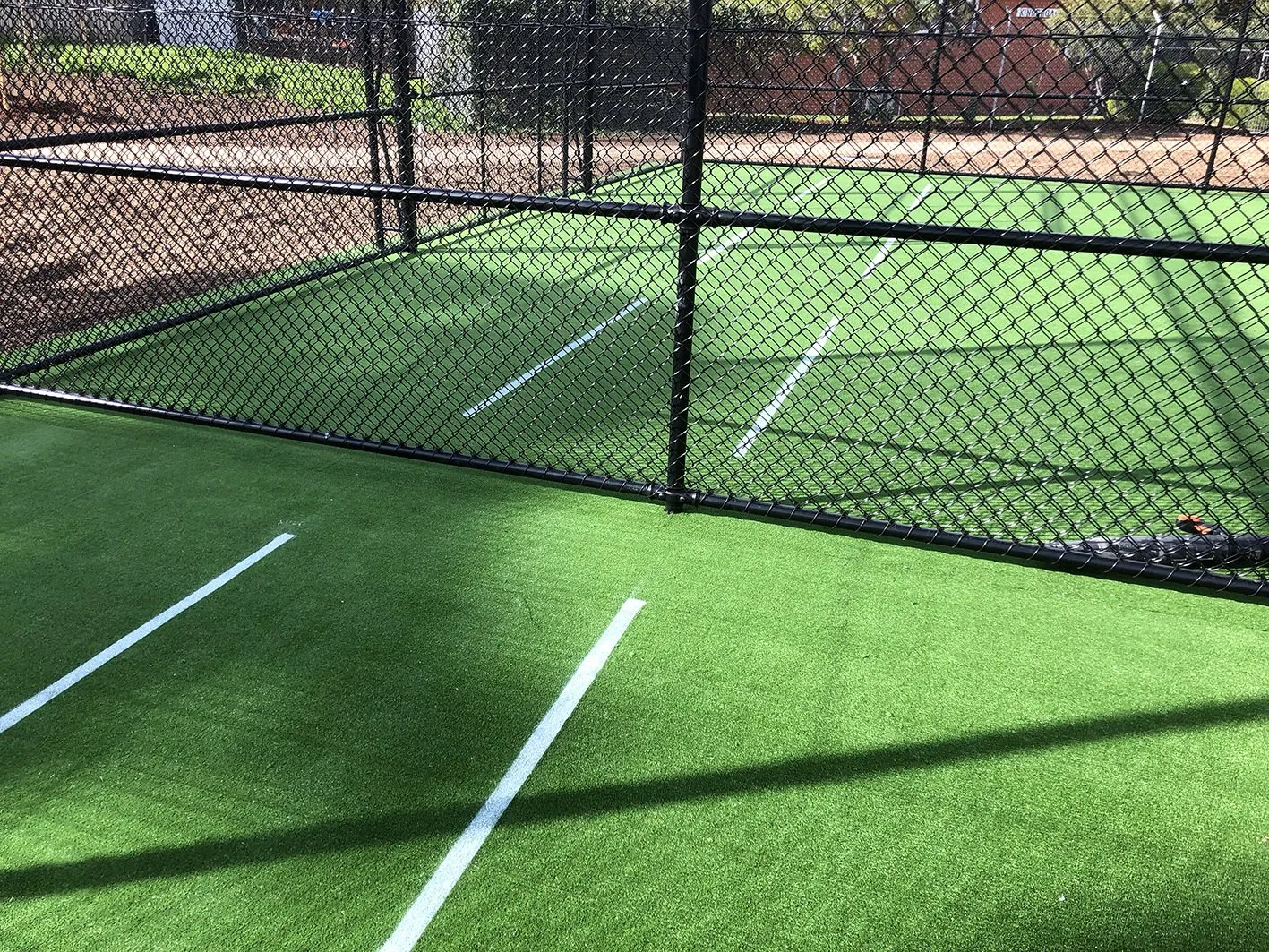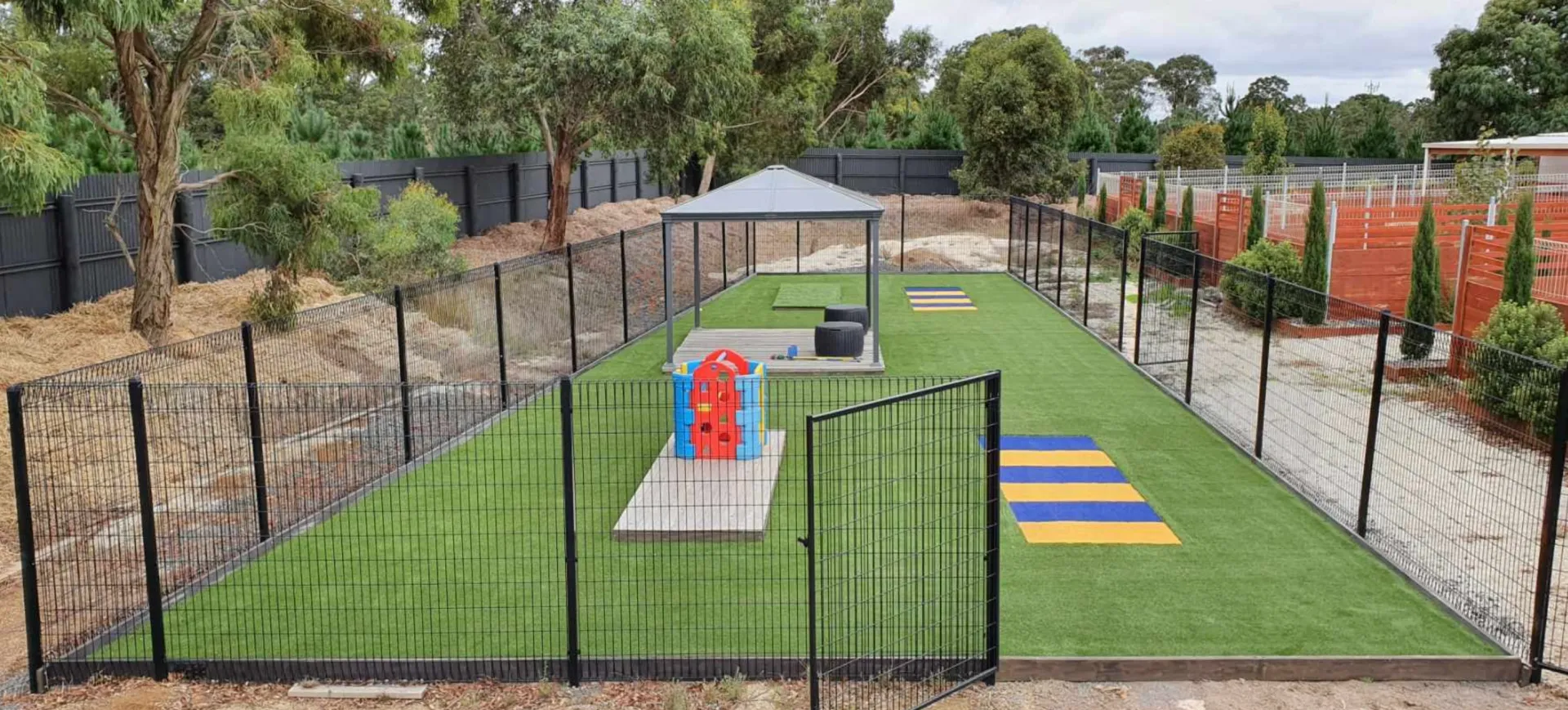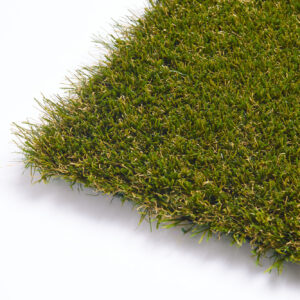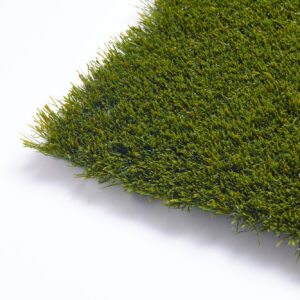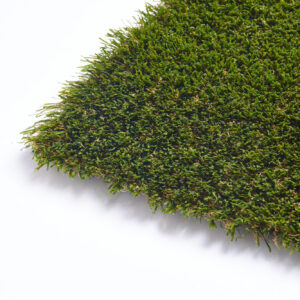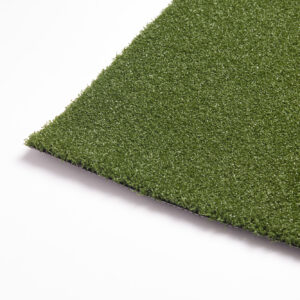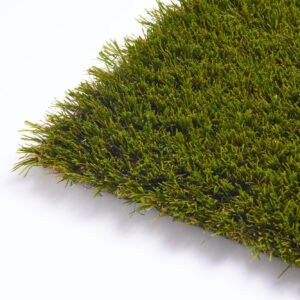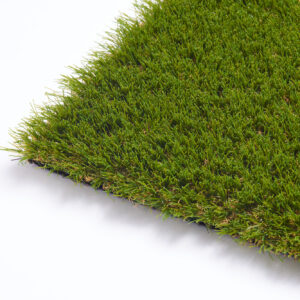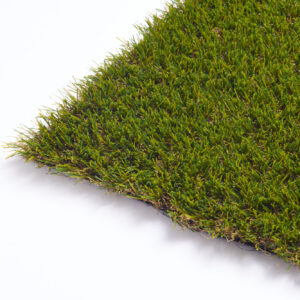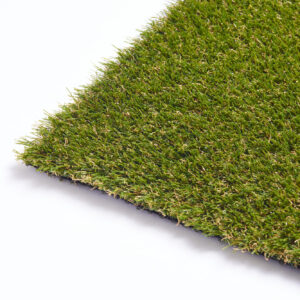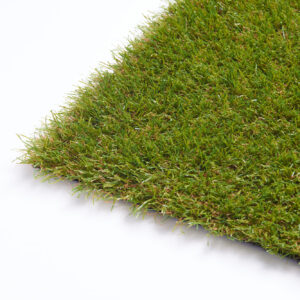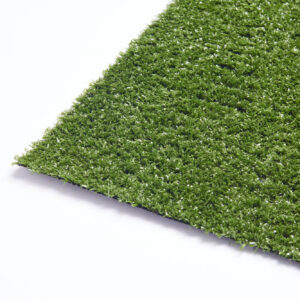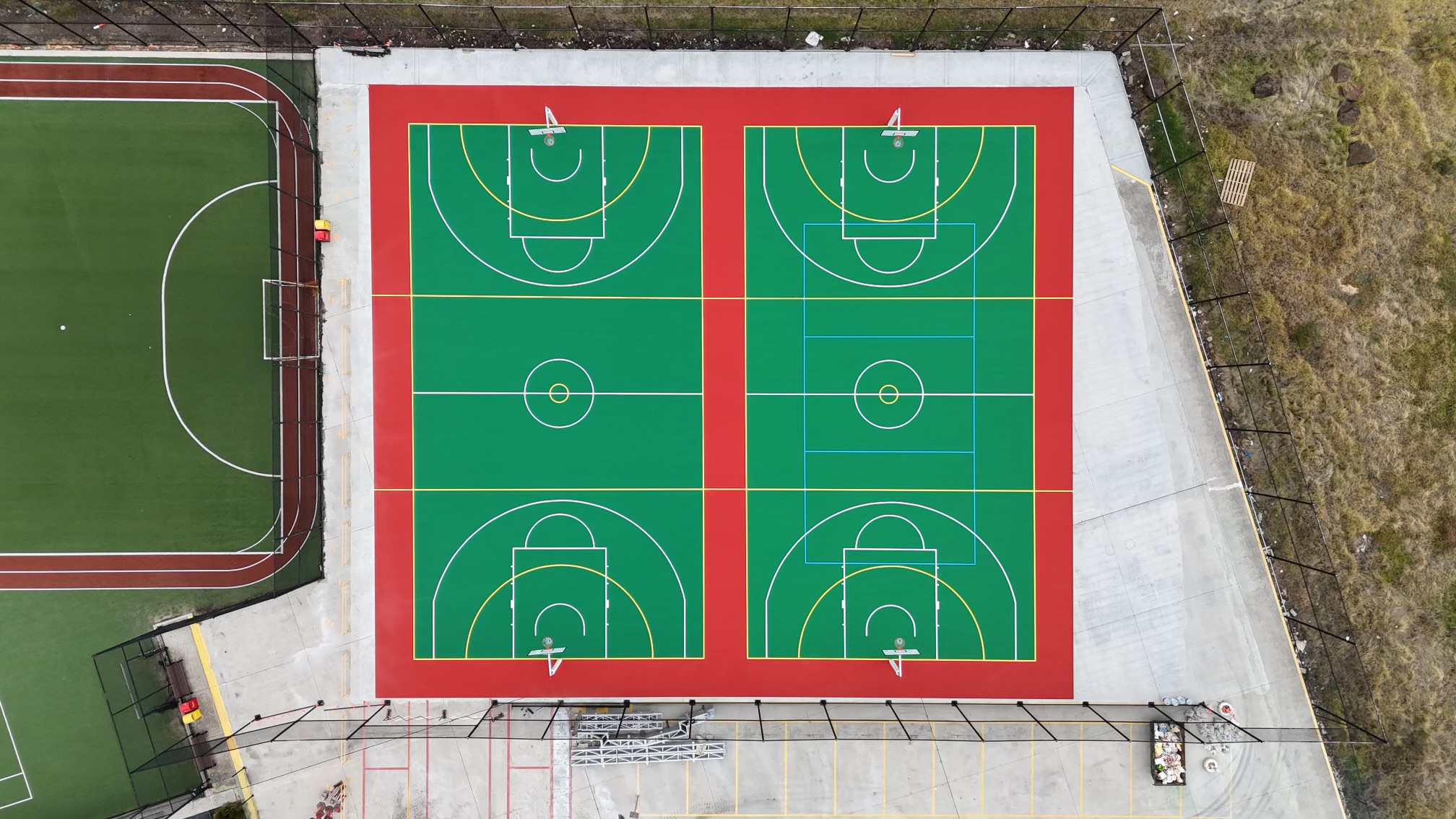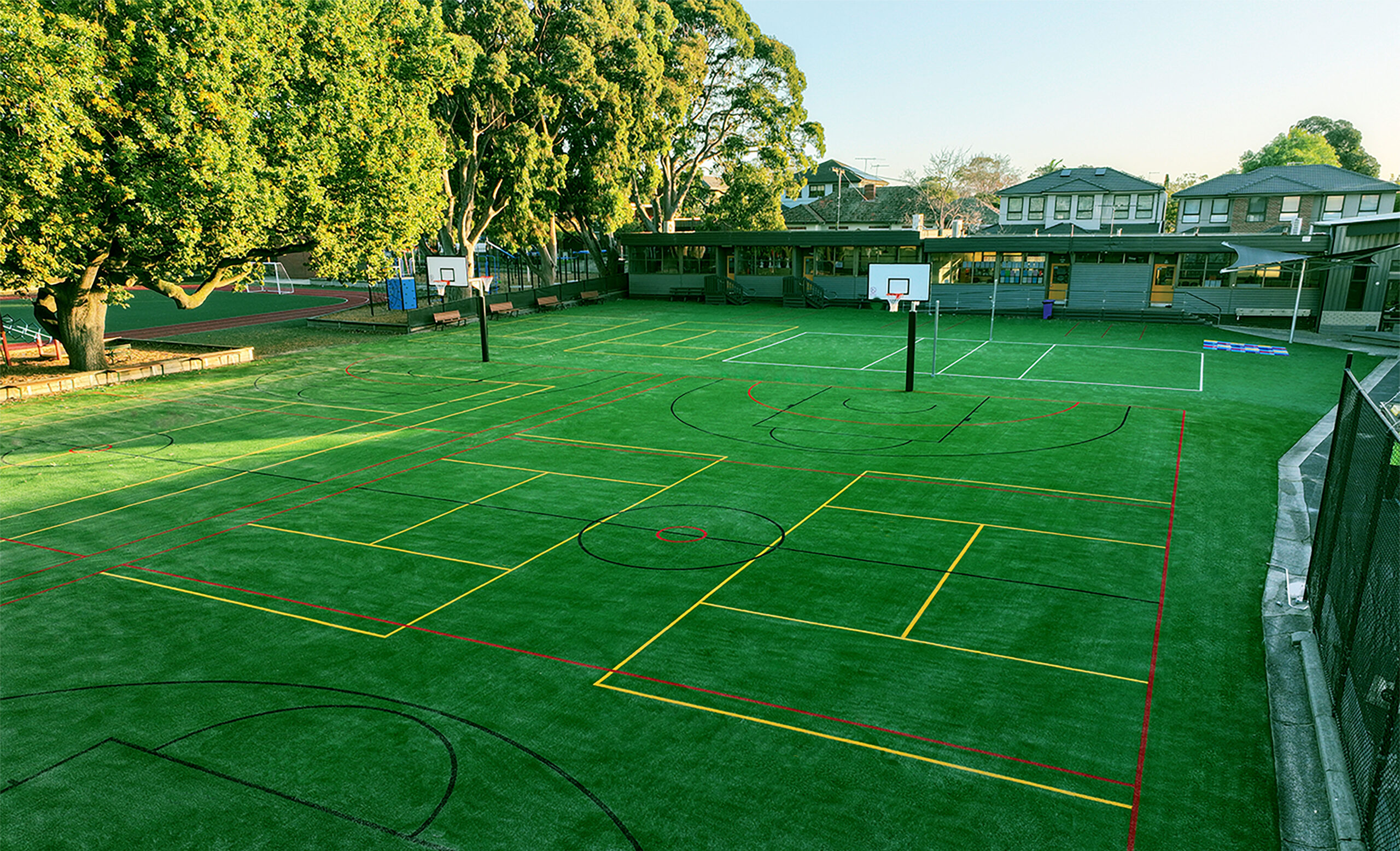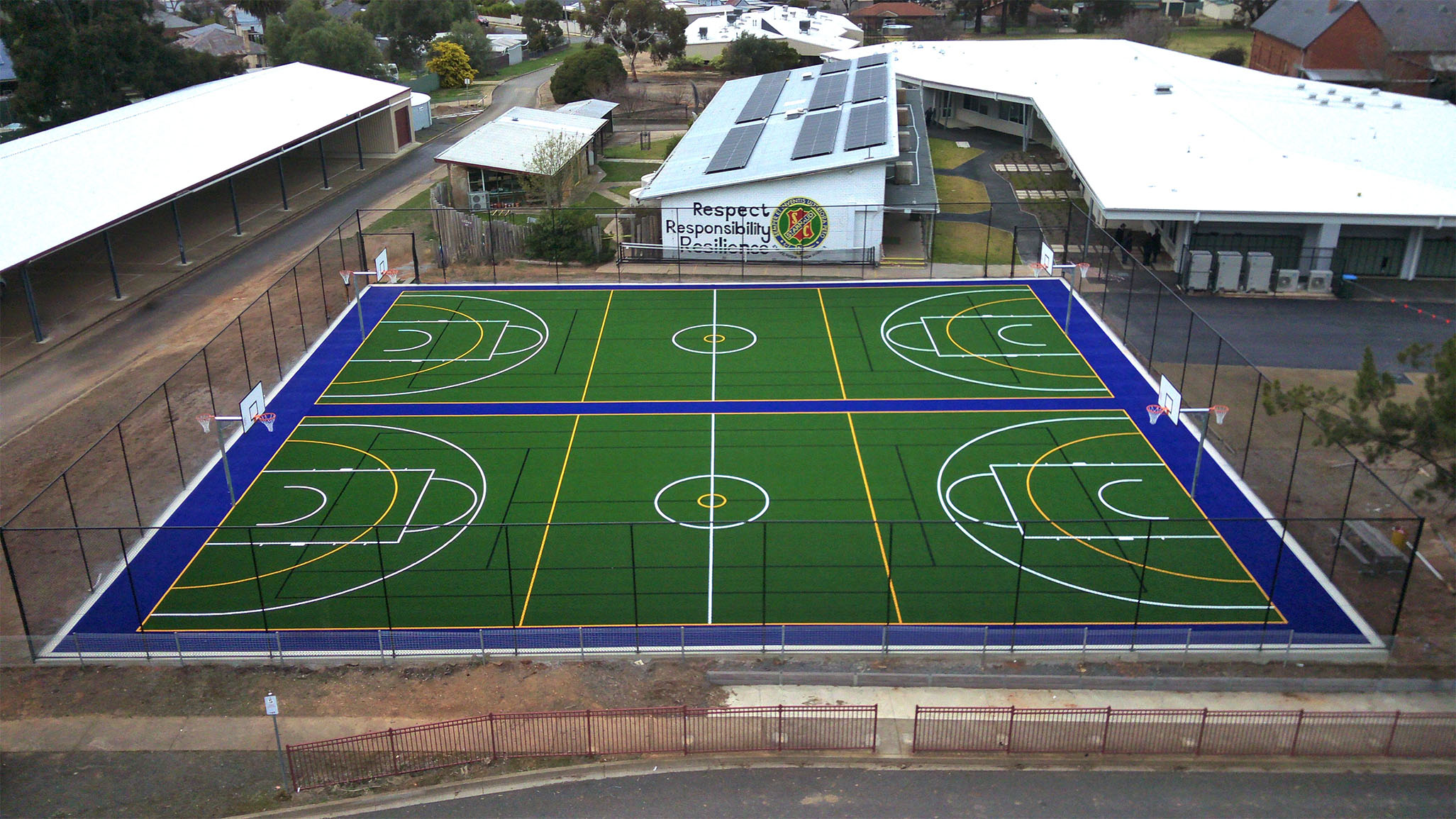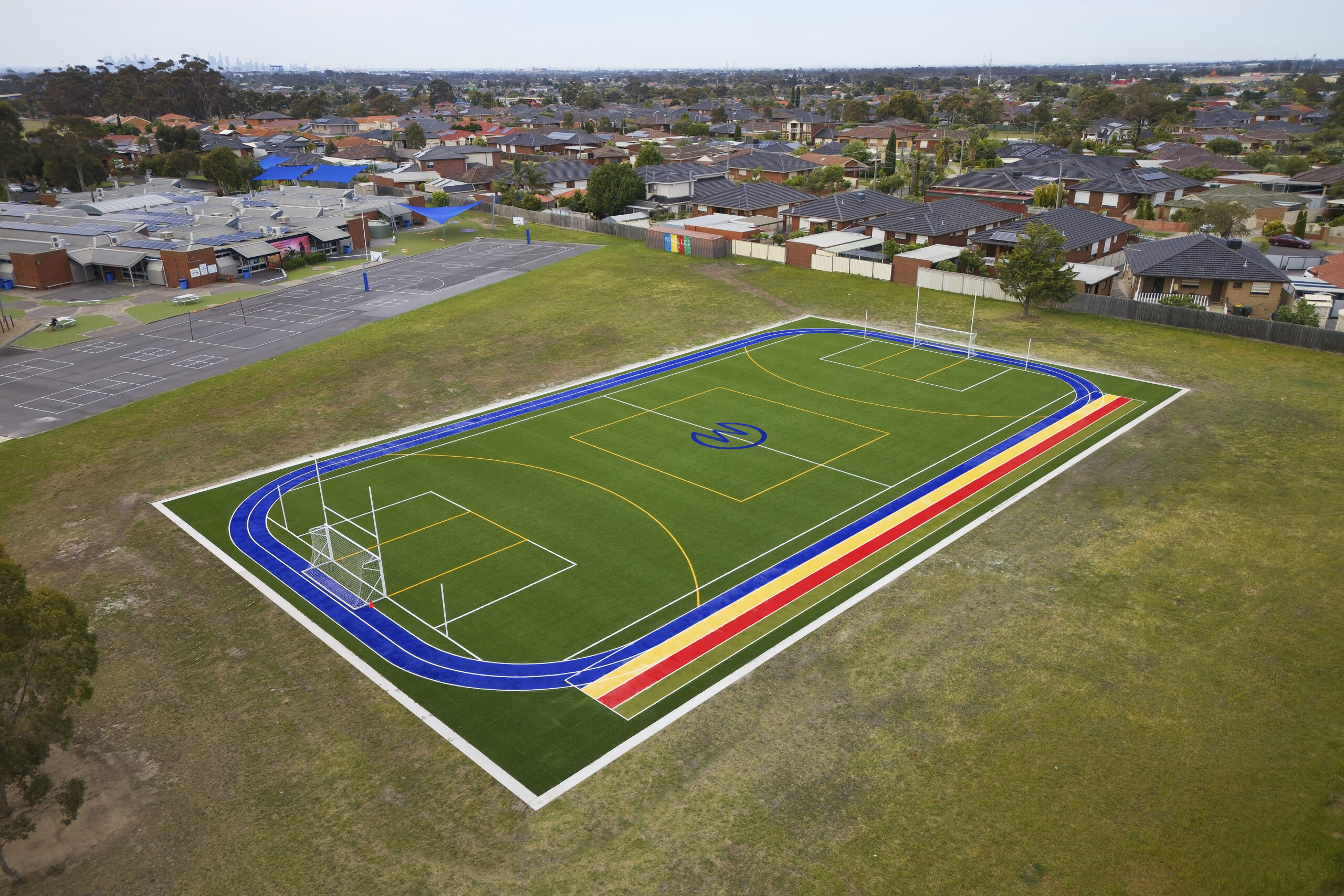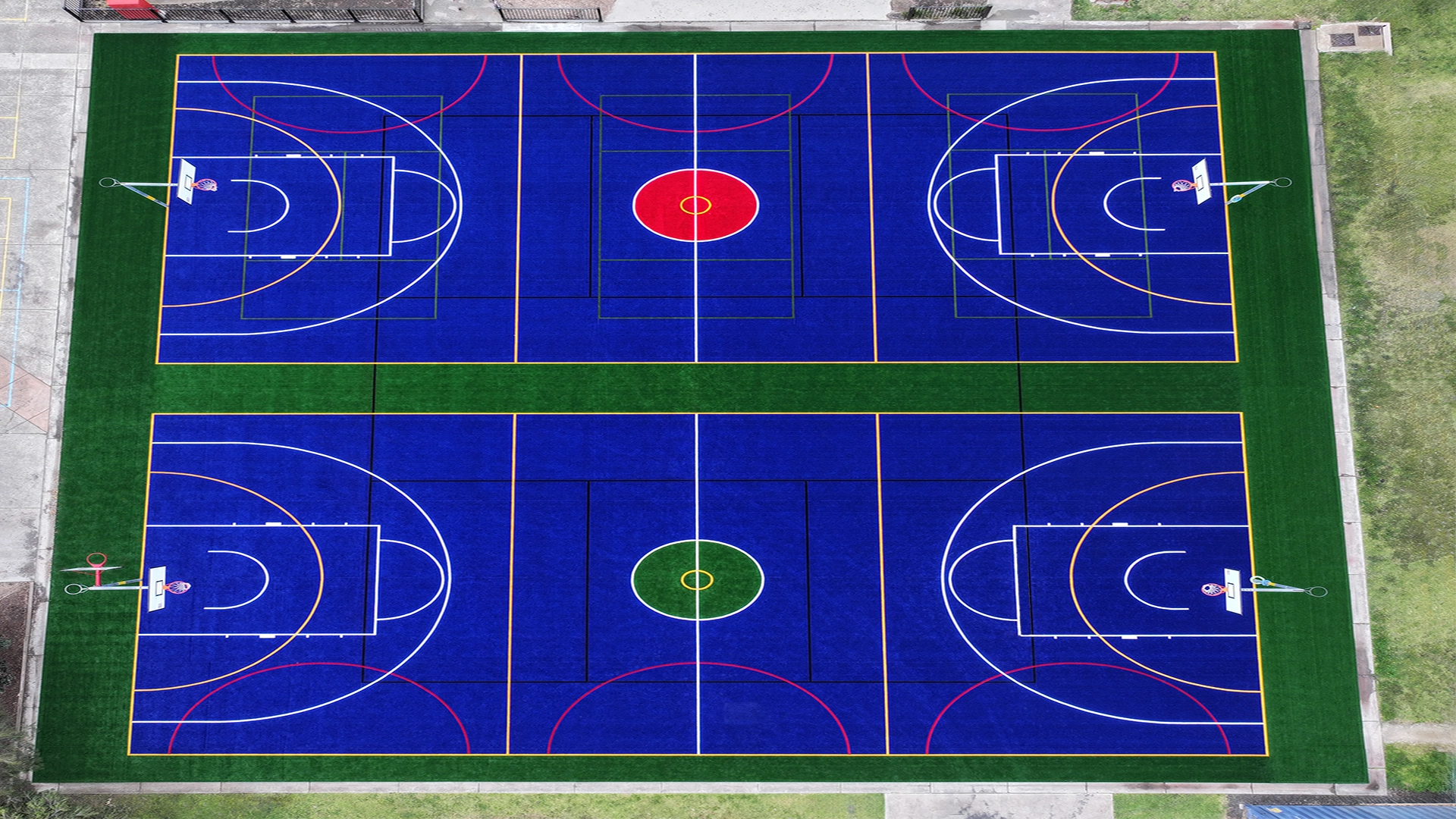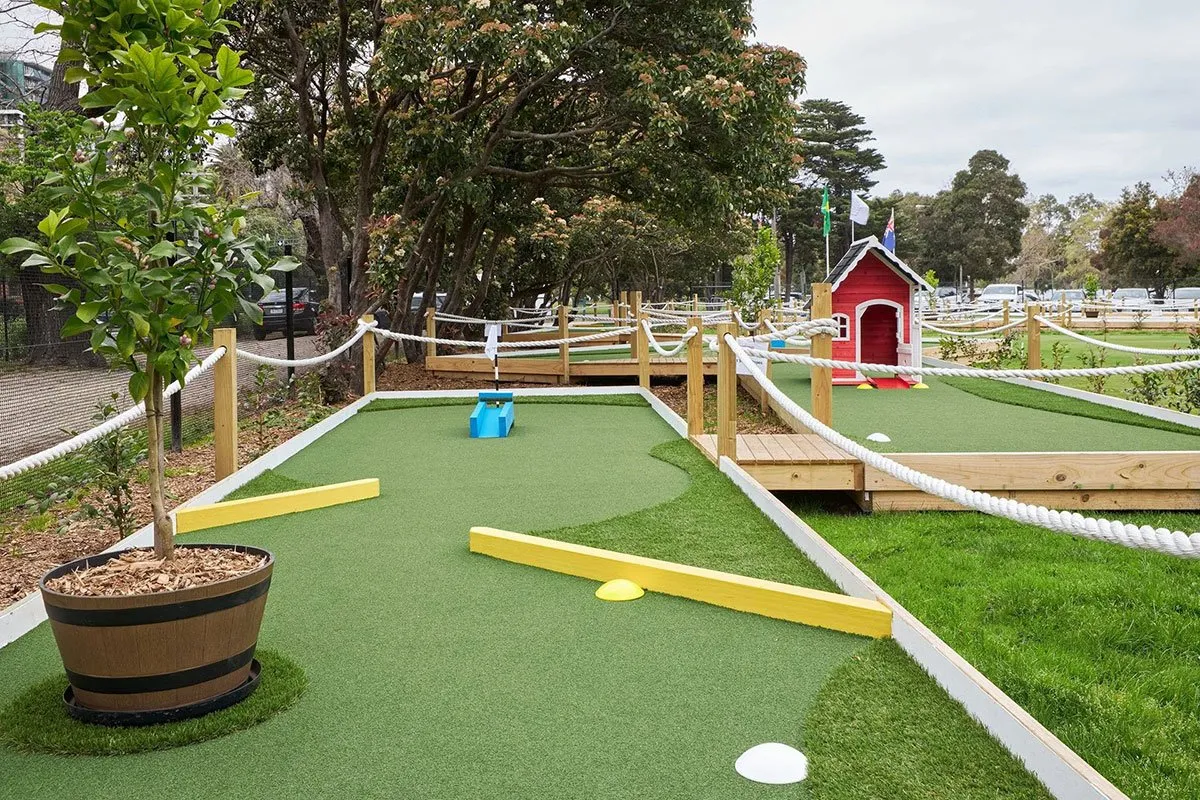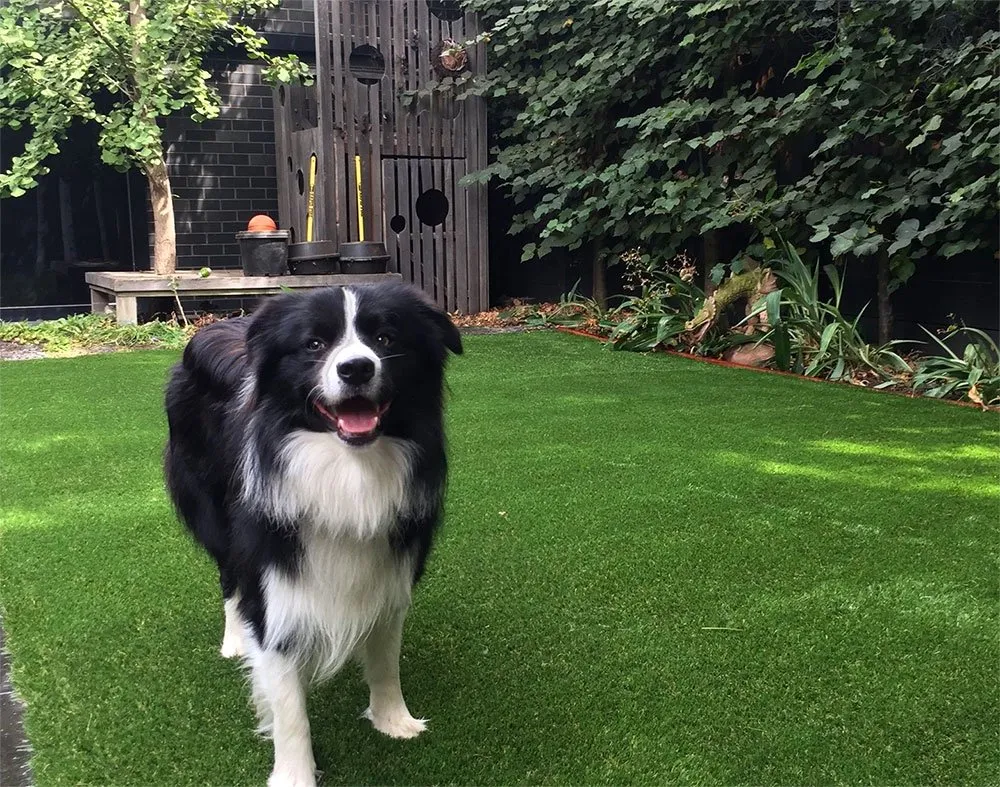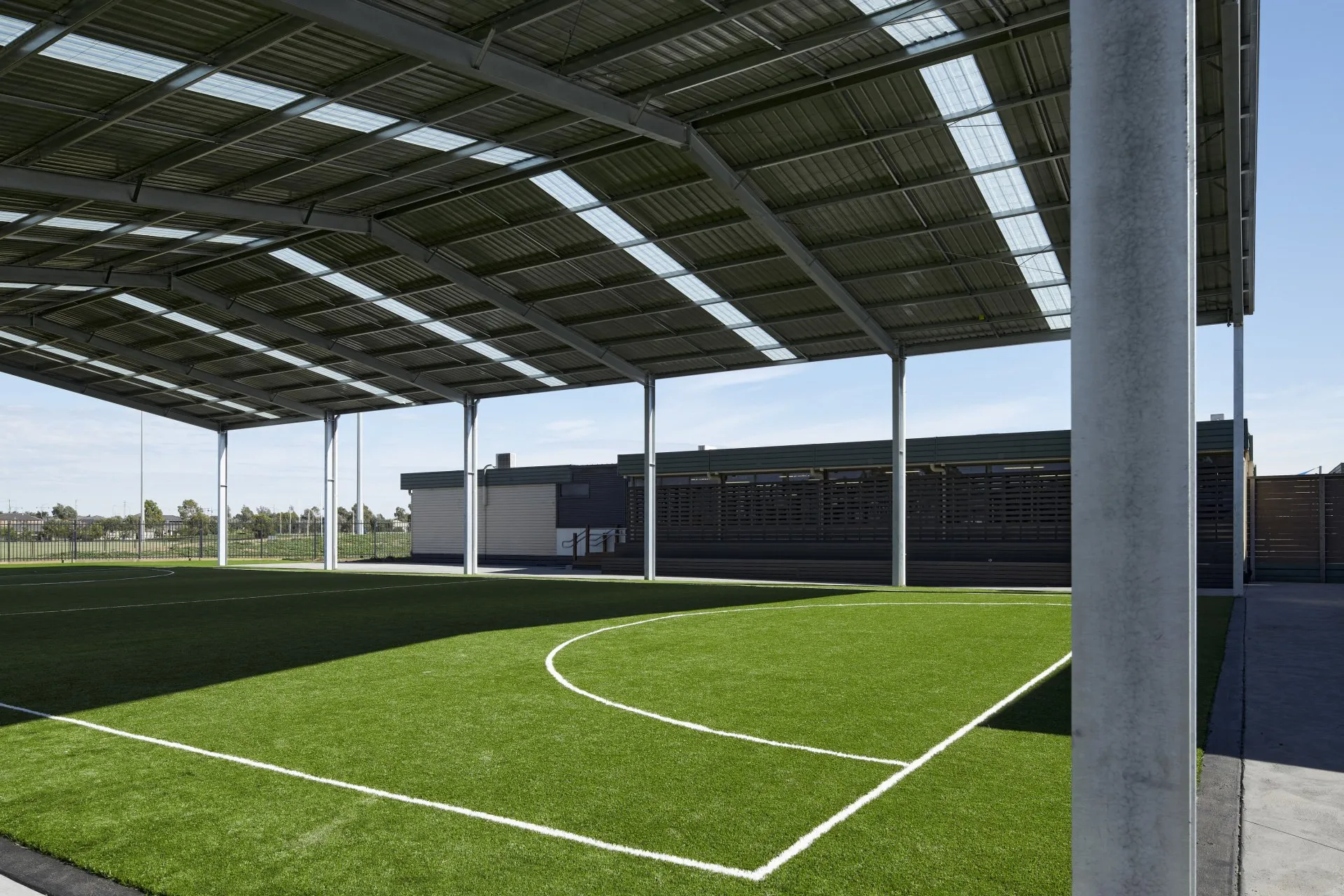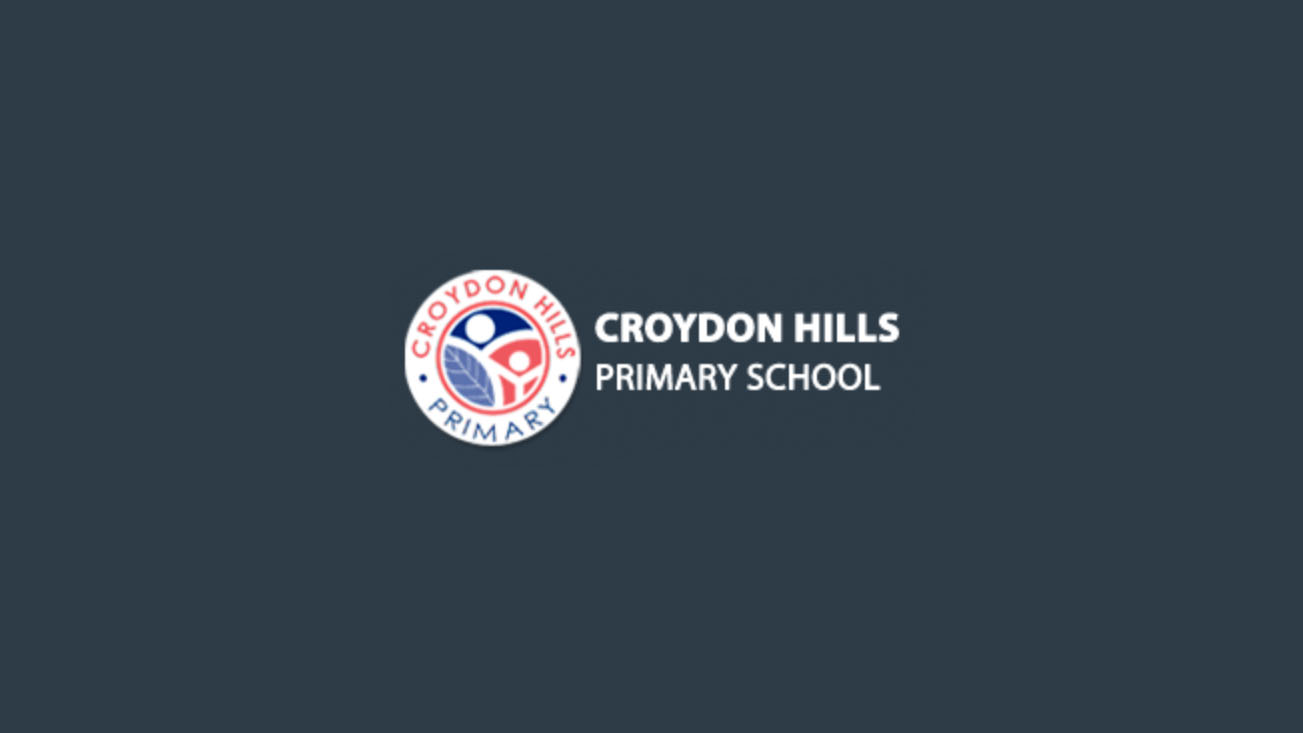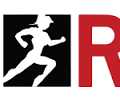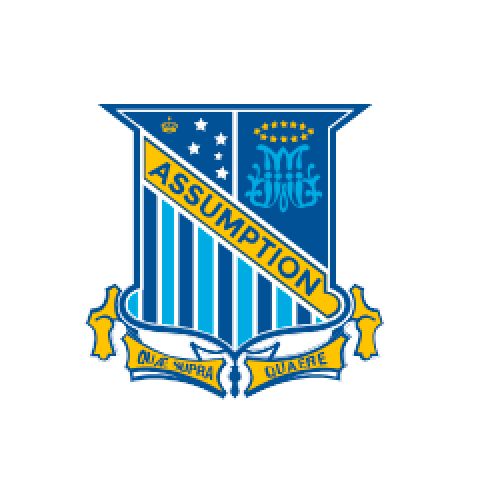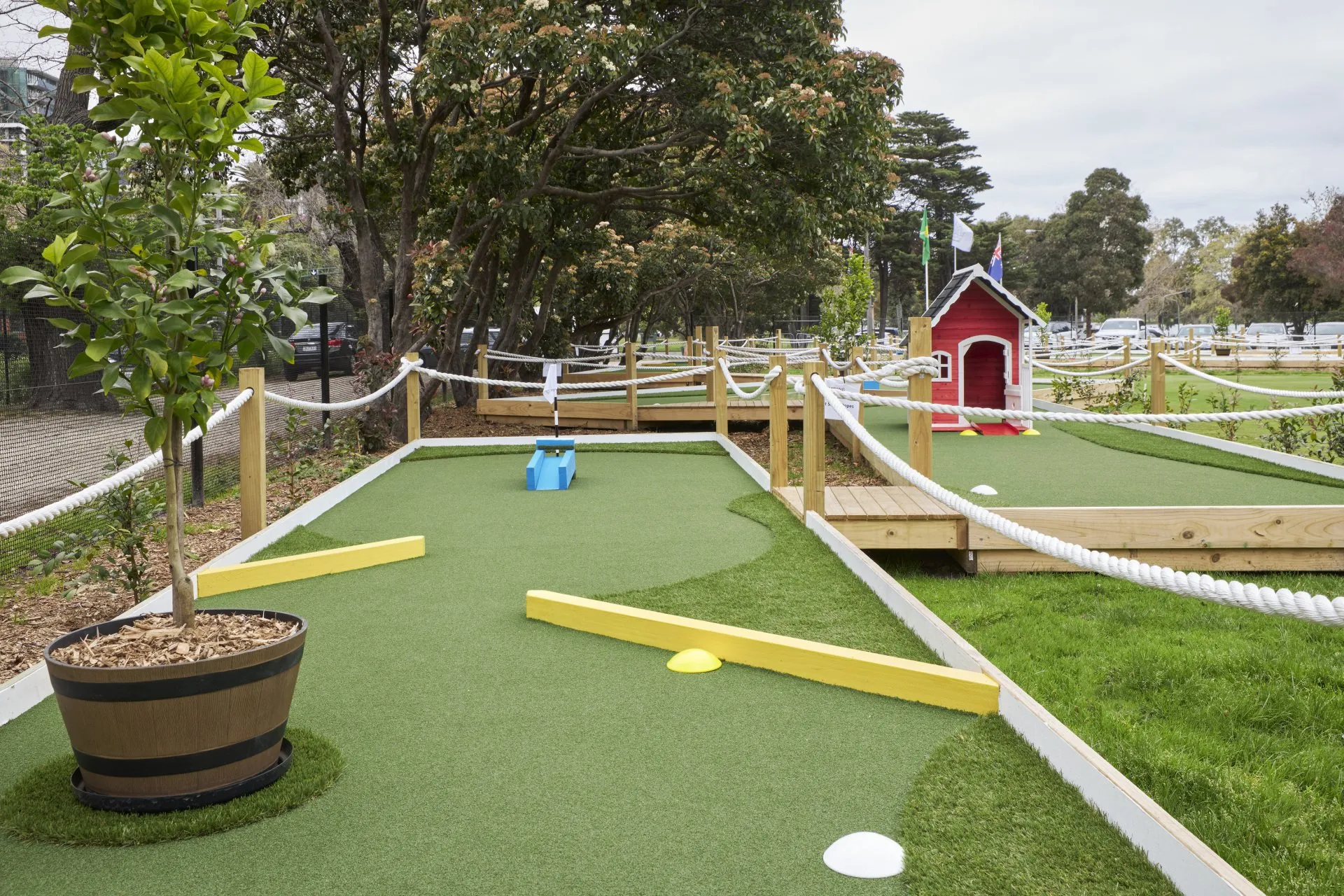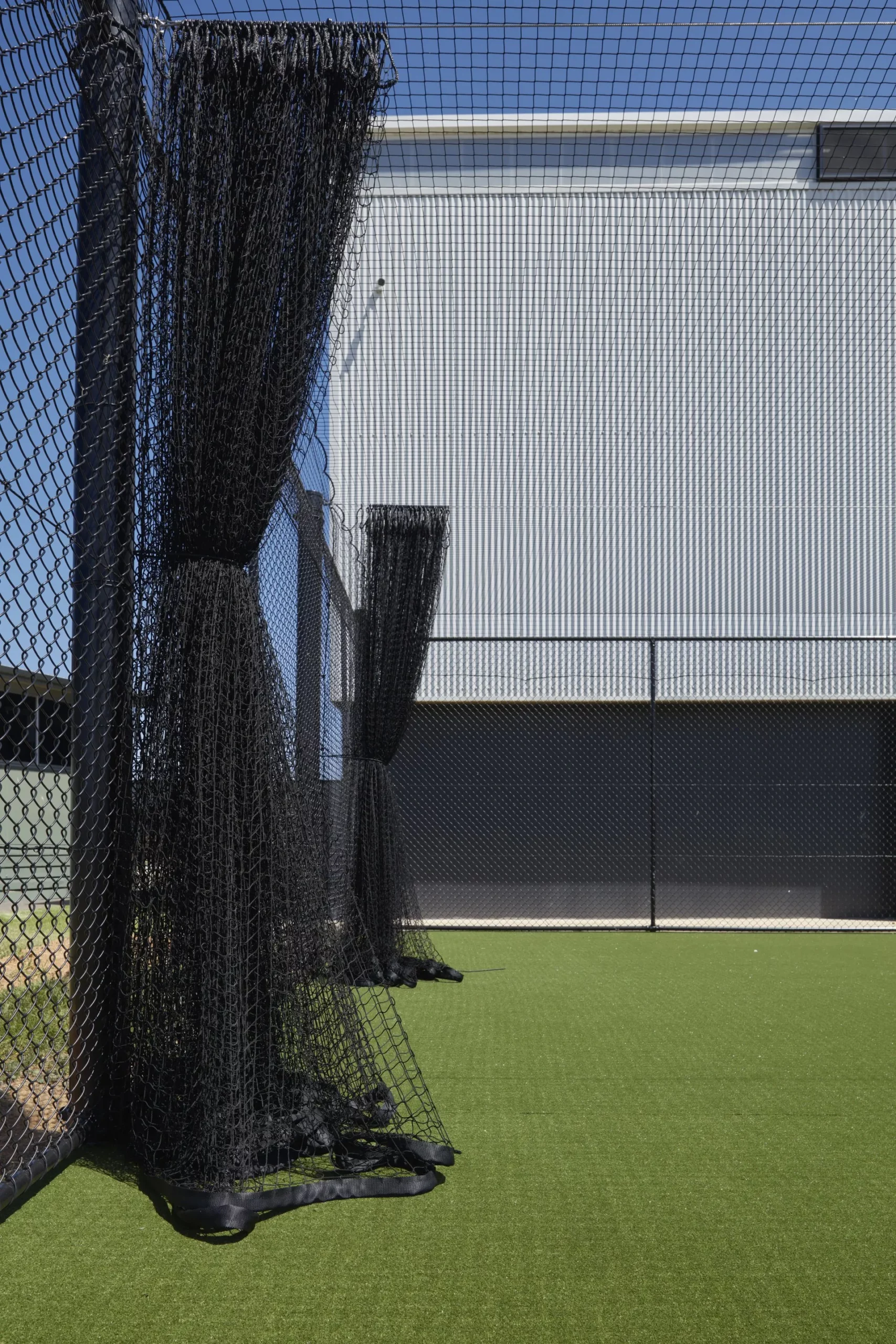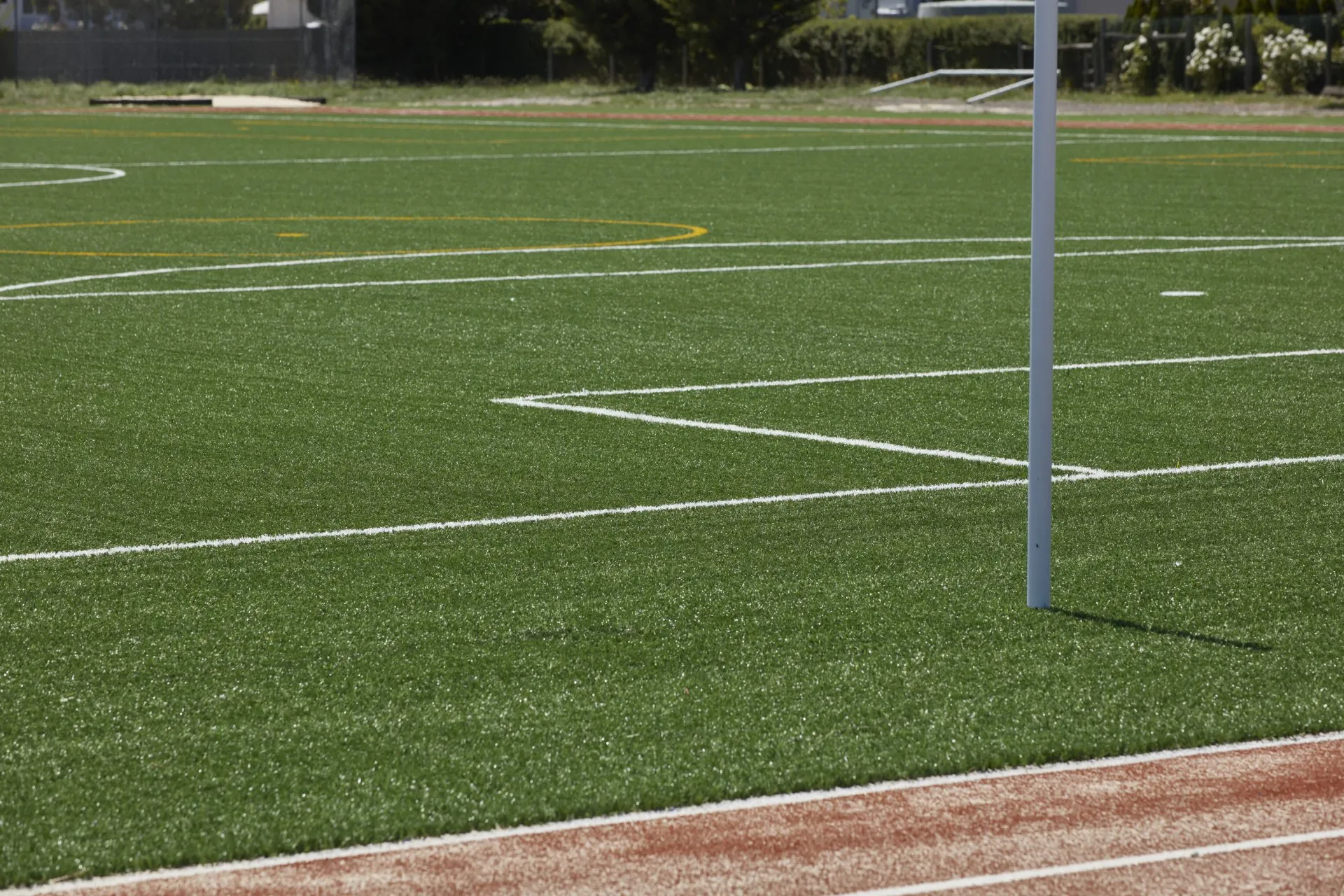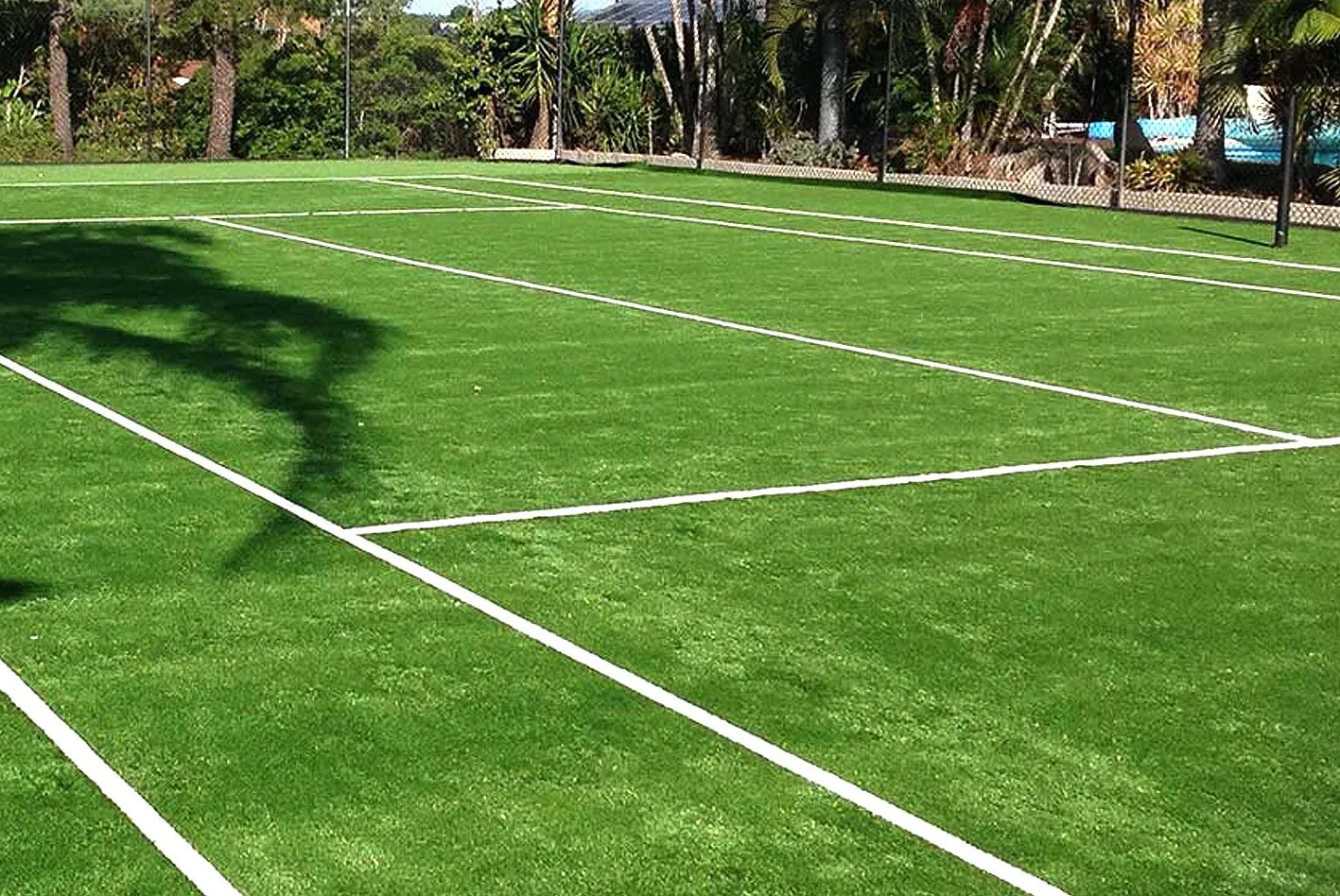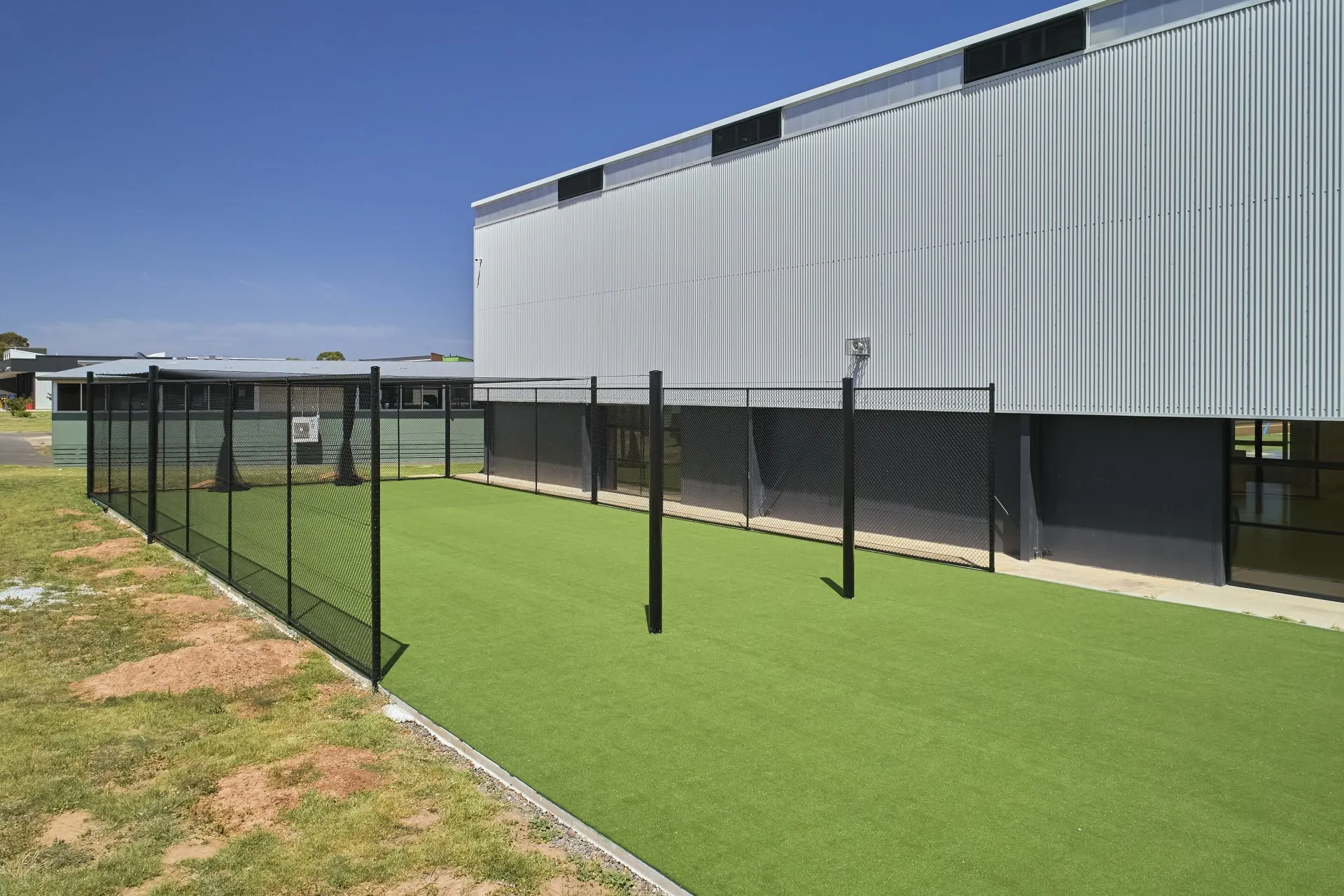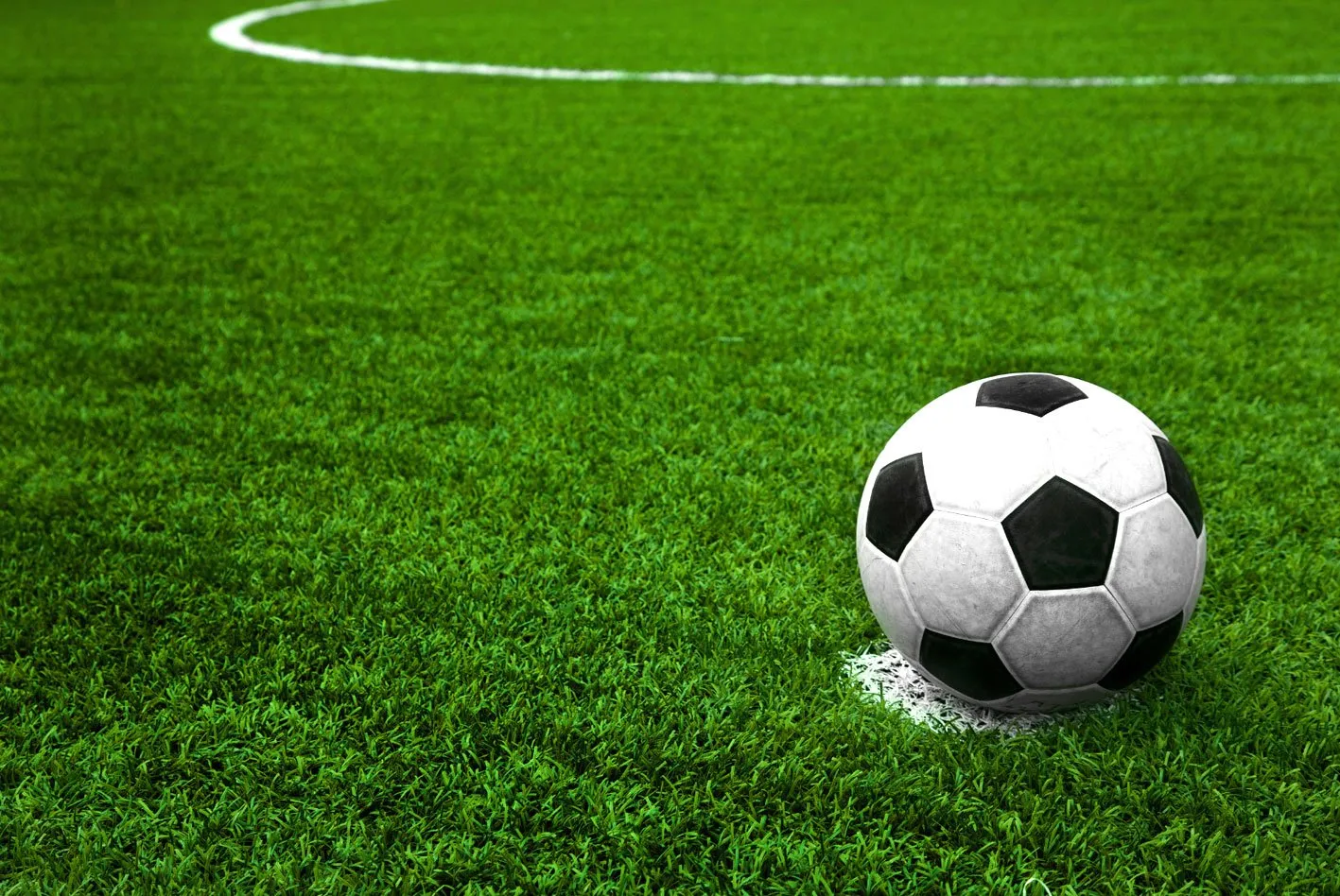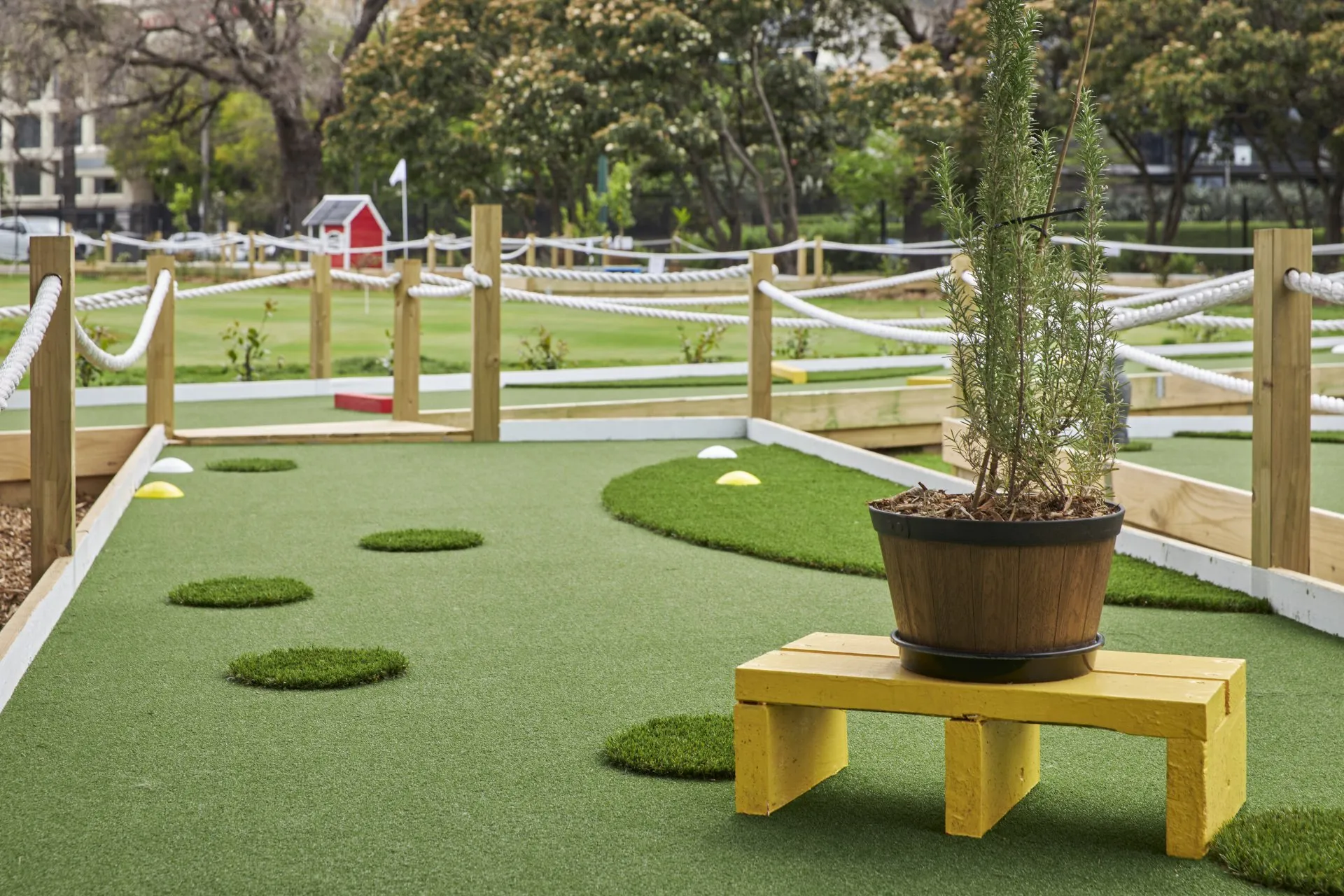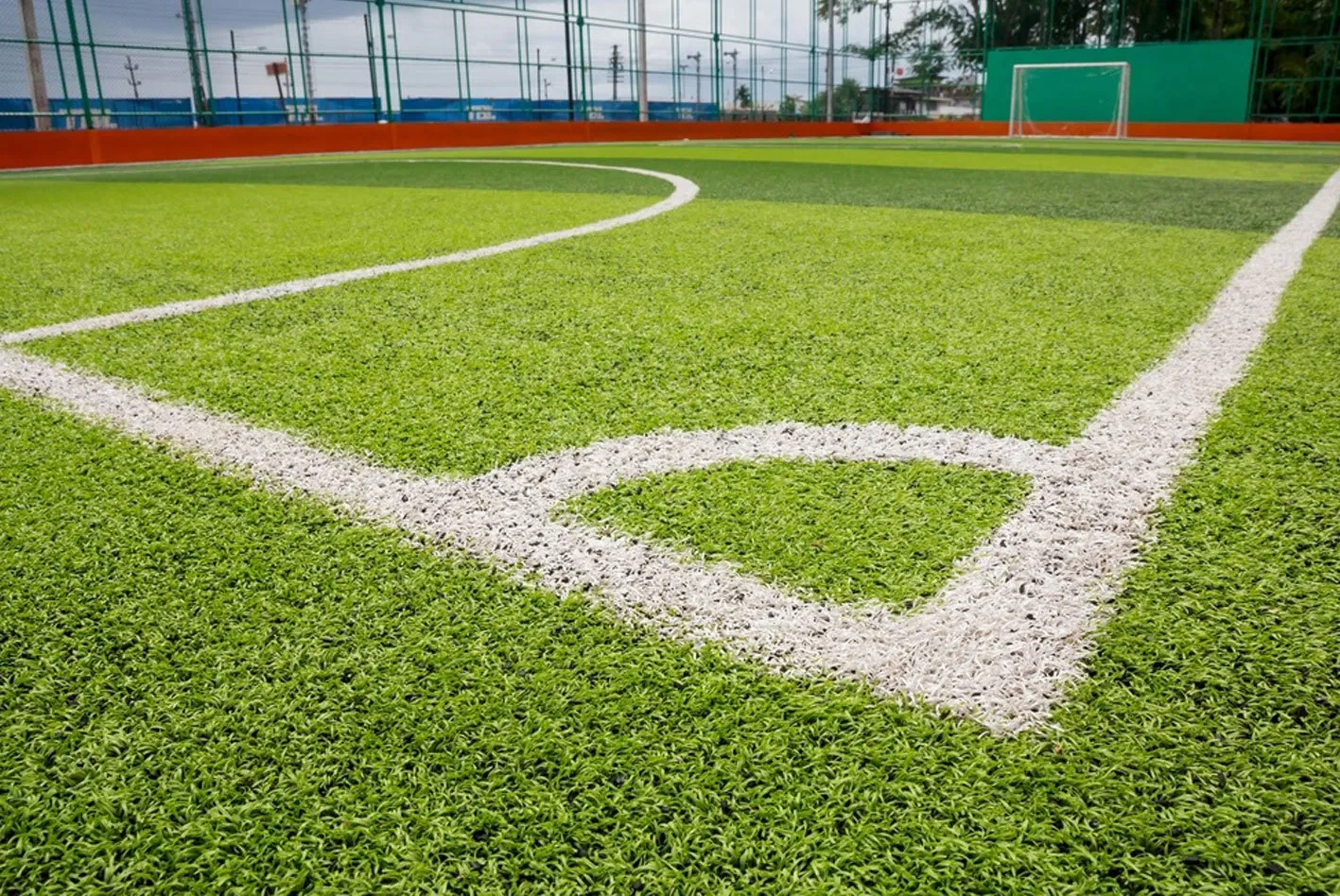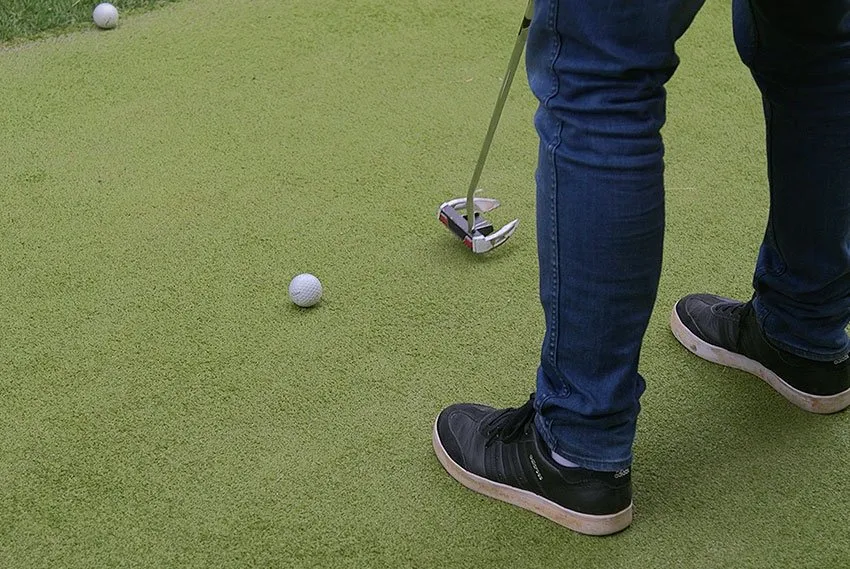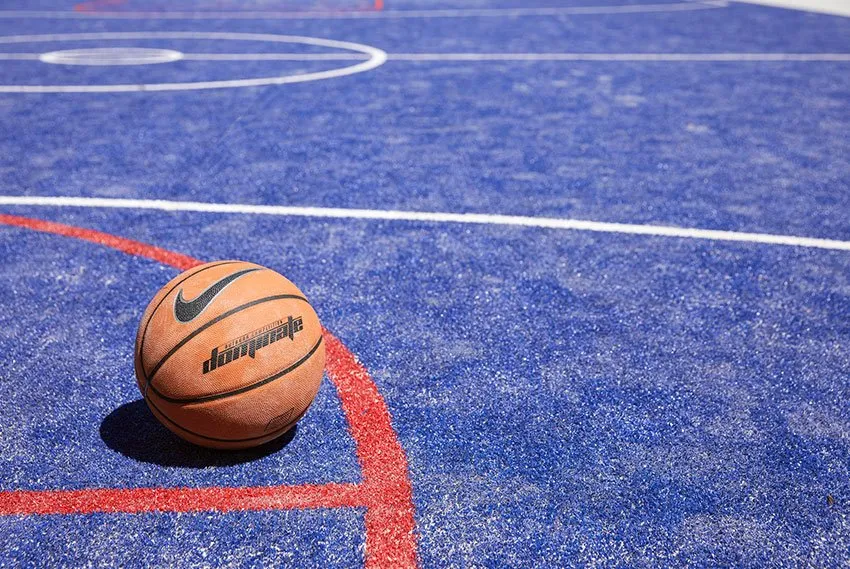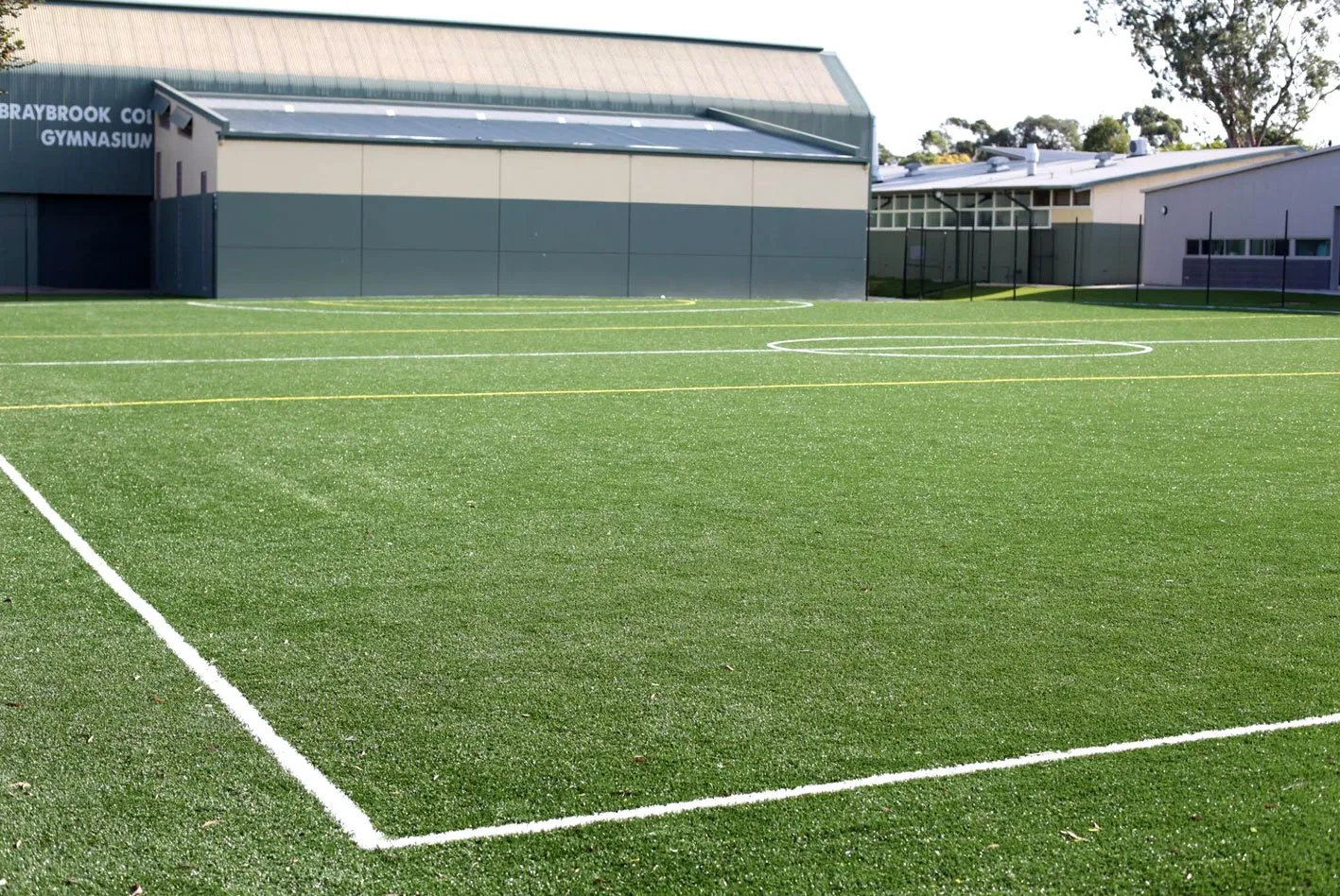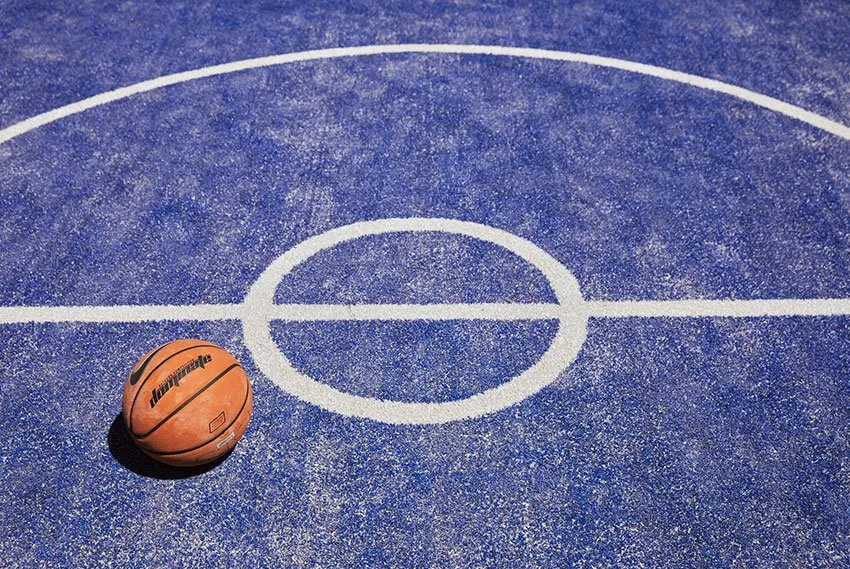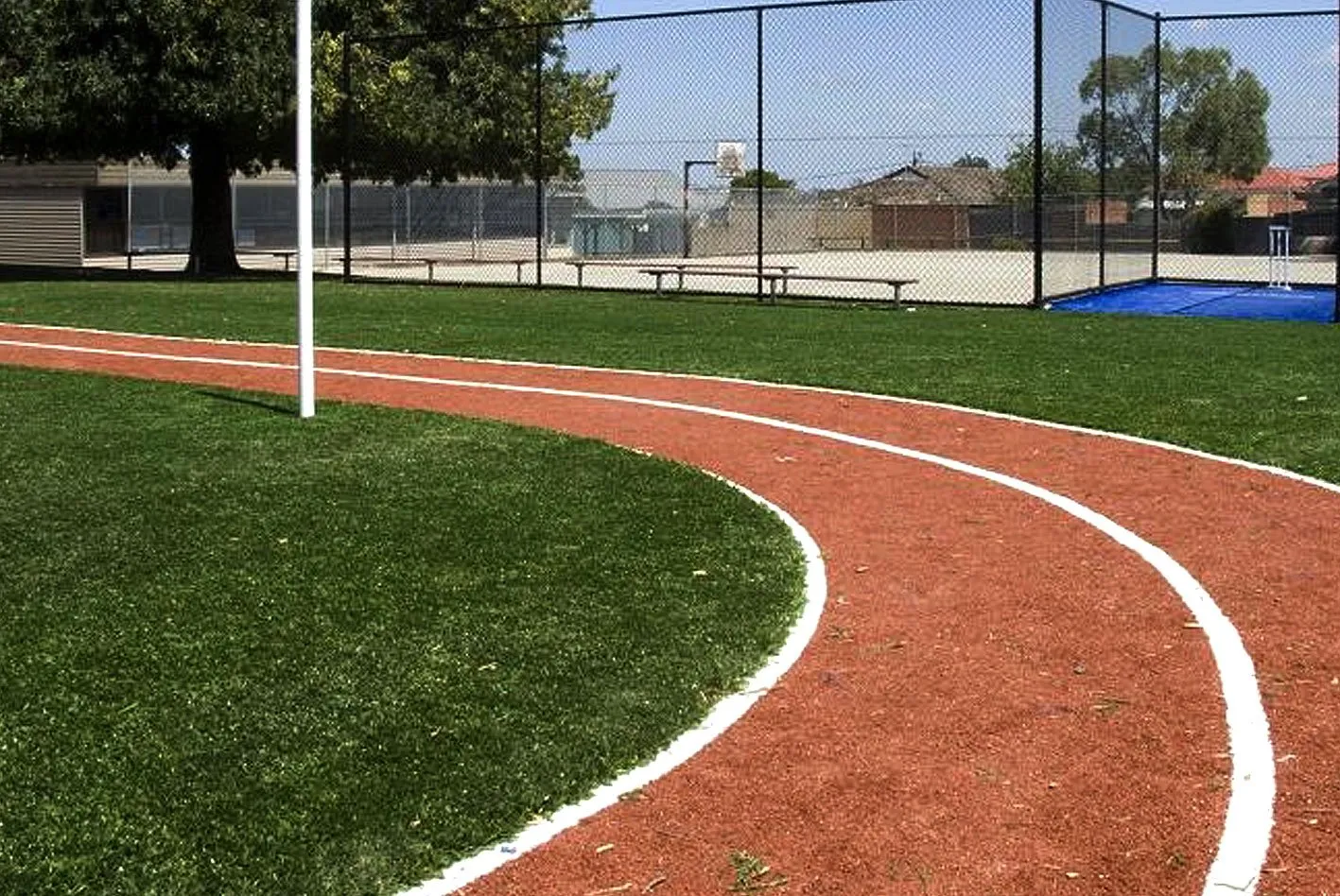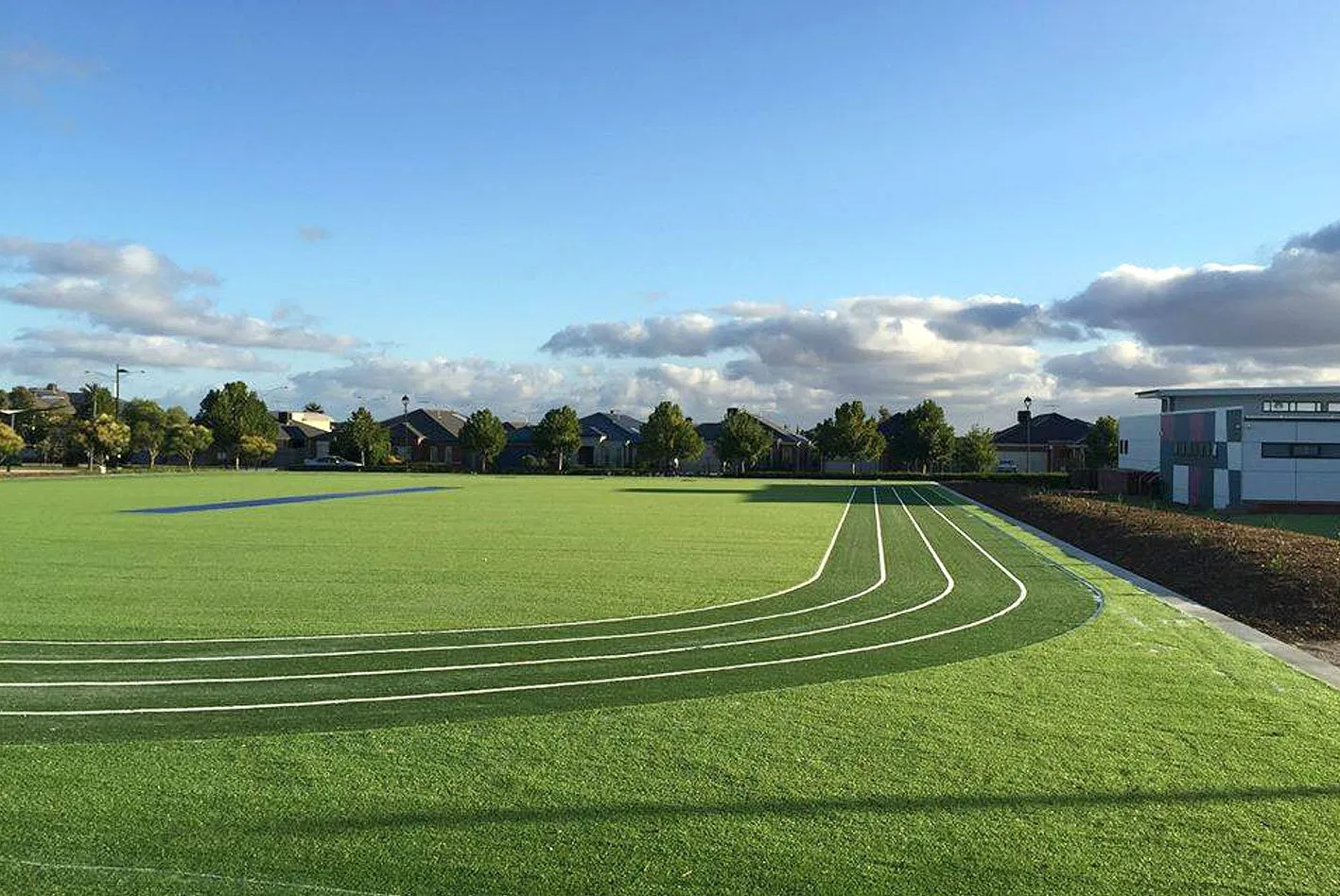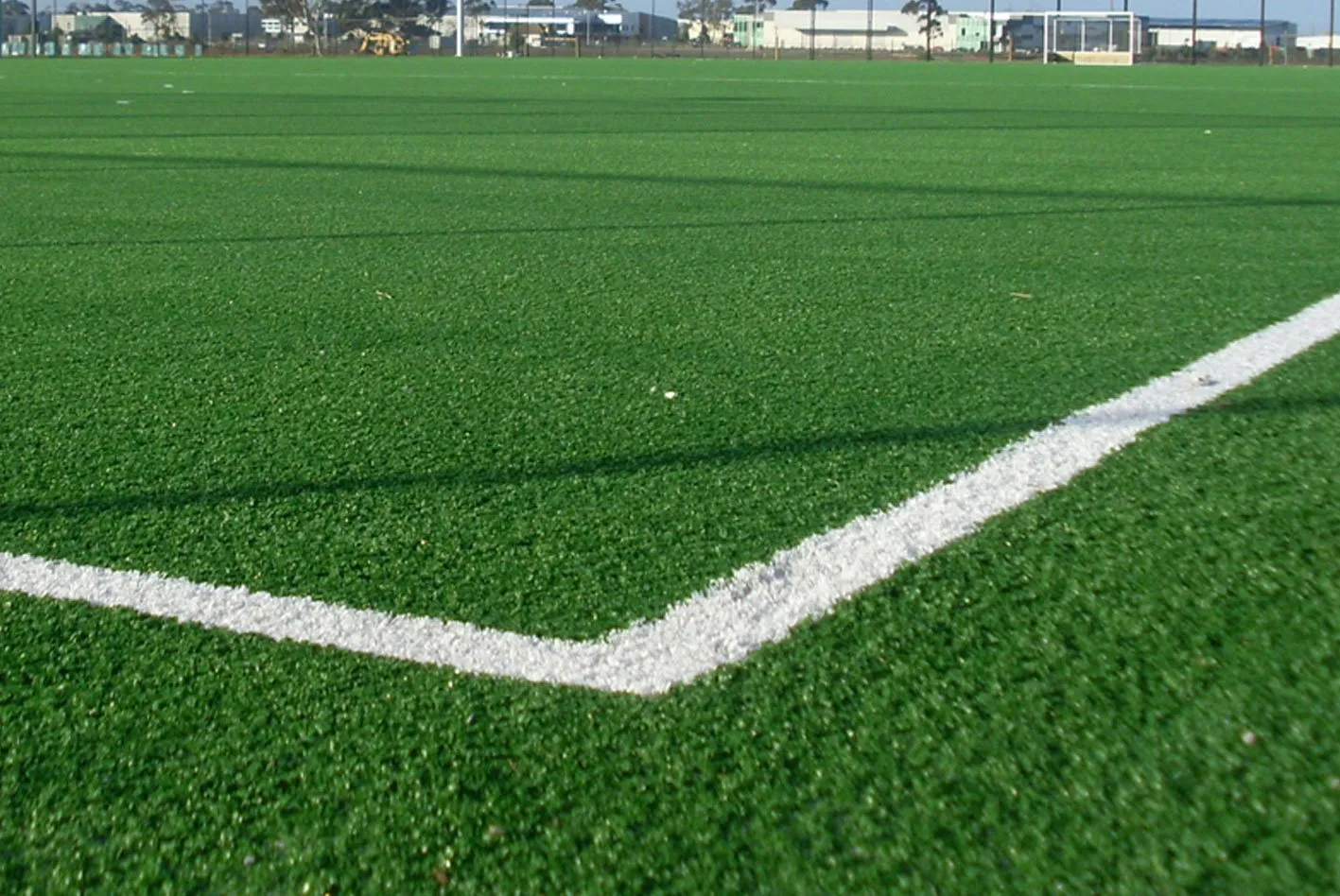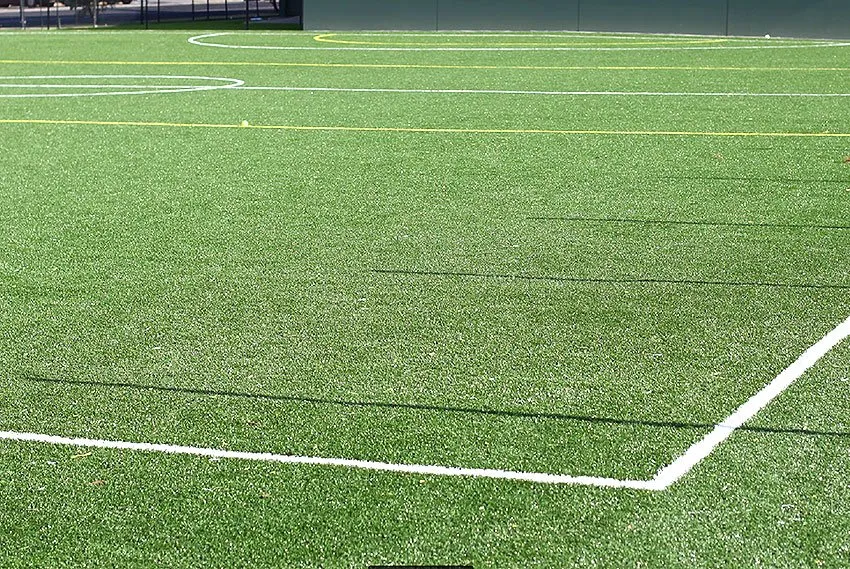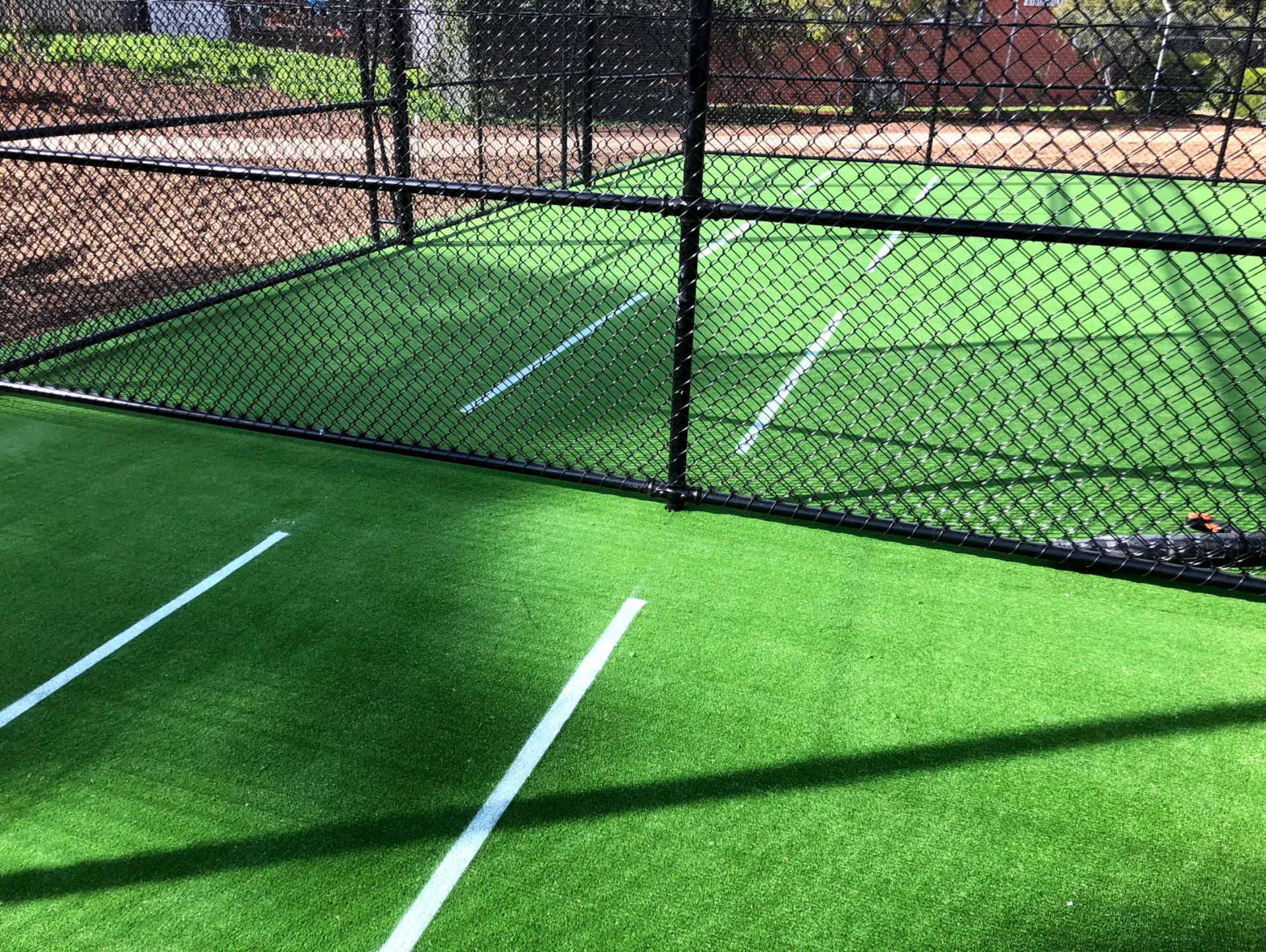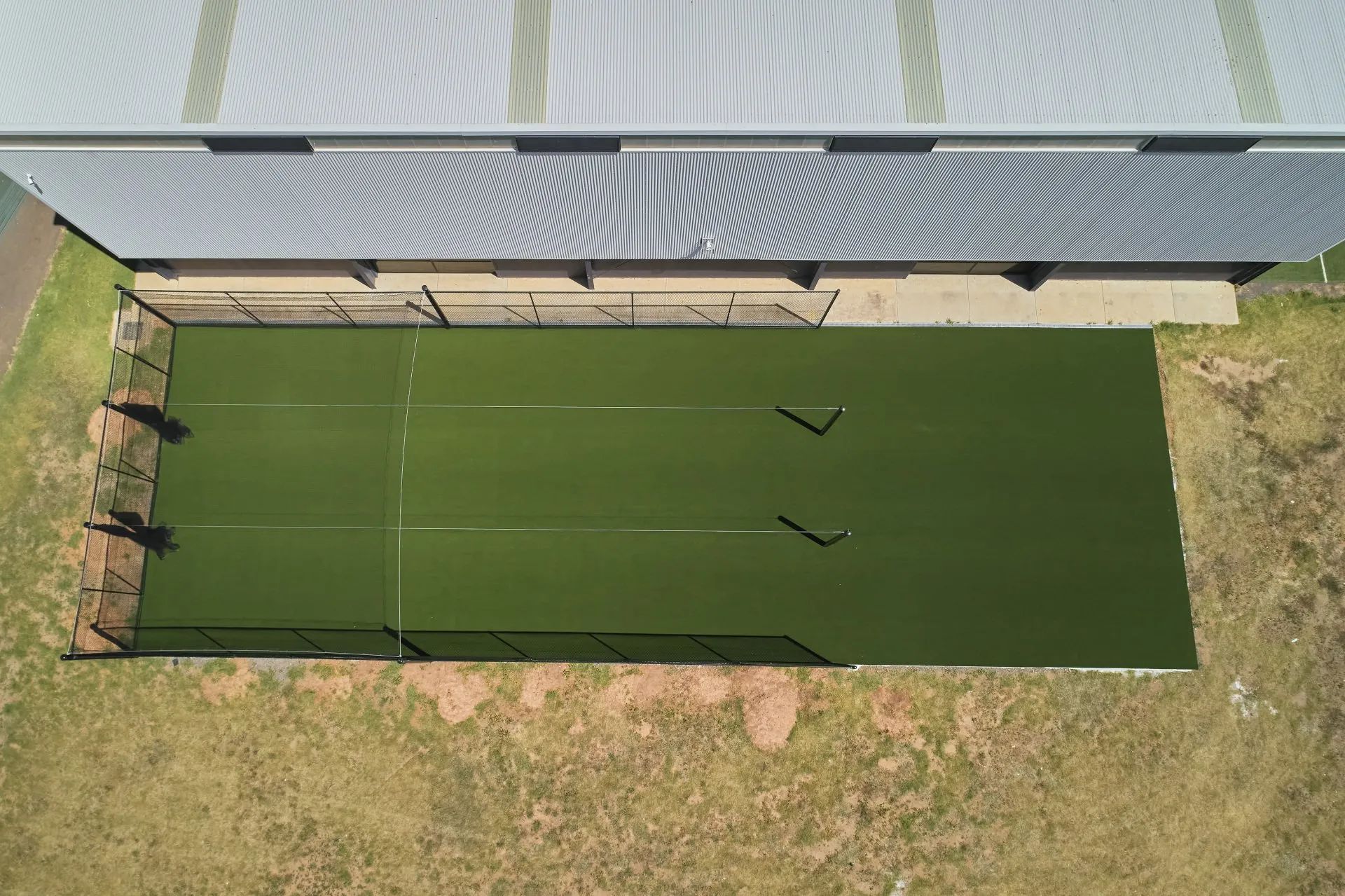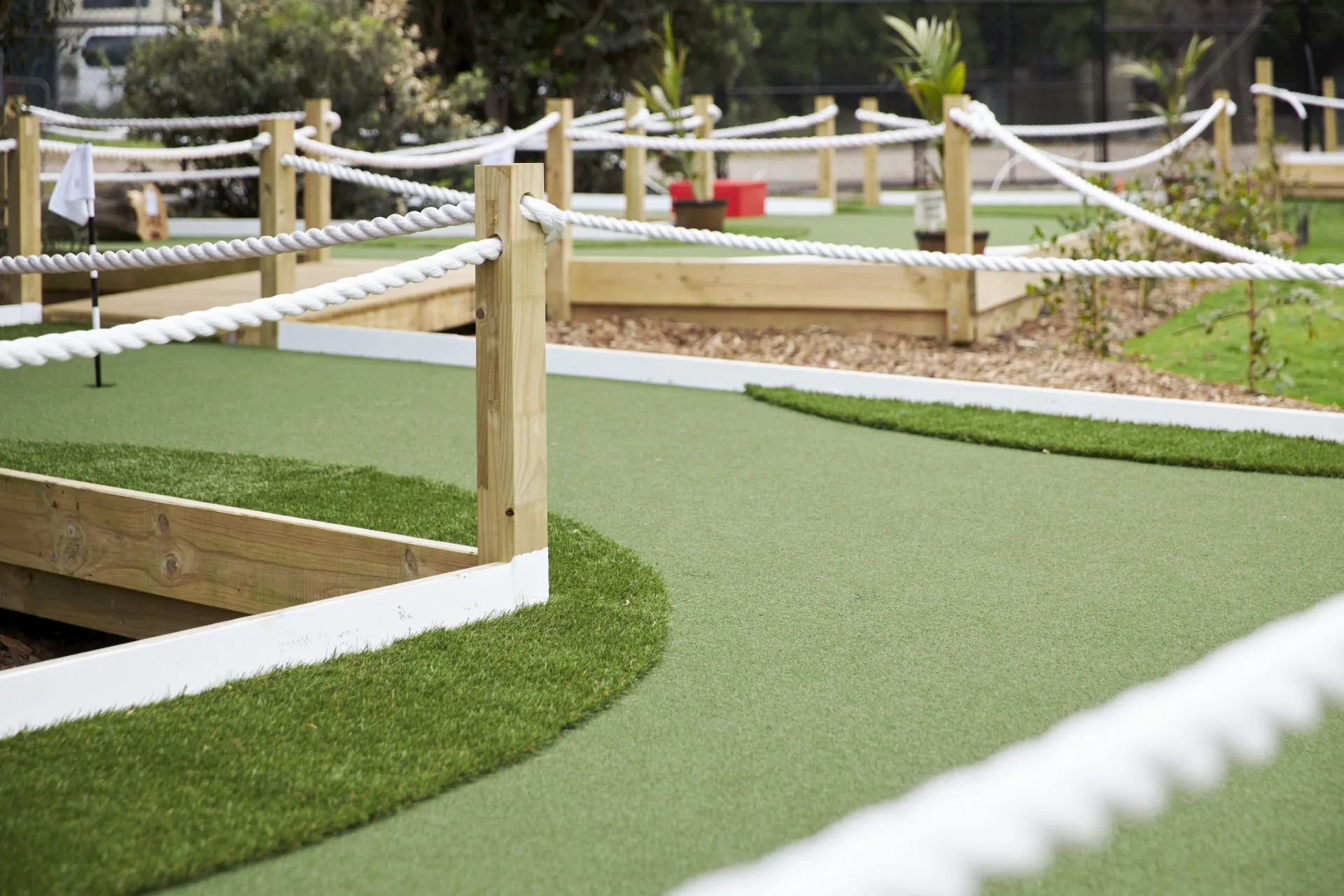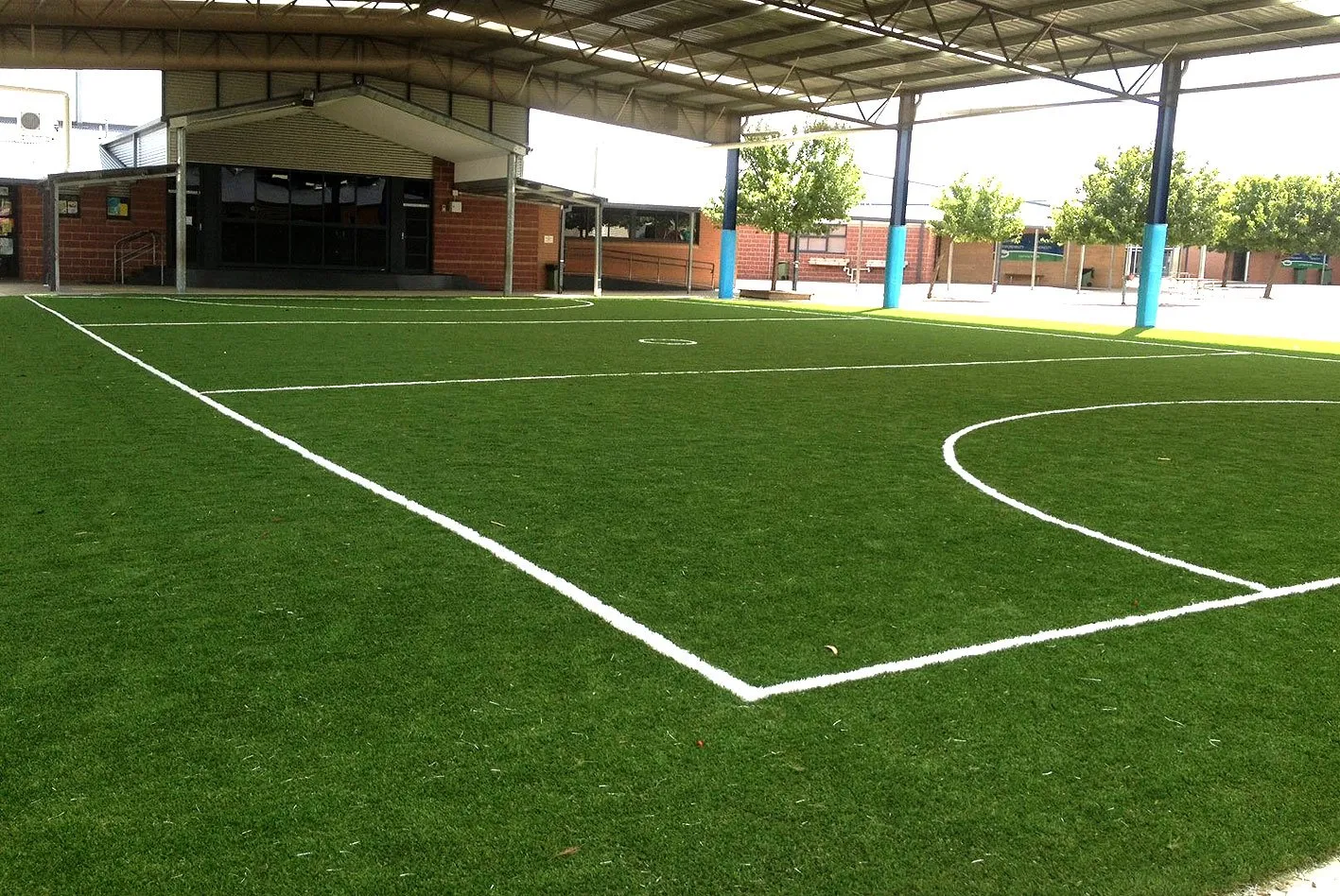Whether you are a day care centre, preschool, primary school, secondary school or university, Easy Turf offer a range of options designed to meet your turfing needs. Our synthetic turf is the ideal solution for multiple uses.
Our synthetic grass is designed to withstand even the highest traffic and can be used for a whole range of different purposes including multipurpose courts, assembly areas, sports fields, court yards and play areas. We’ll listen closely to your requirements and tailor a solution that works best for you.
Some advantages to installing synthetic multipurpose areas are;
- Children can play their best game safely in all conditions on an even, stable all-weather surface.
- Training and game schedules are not compromised because of poor weather or poor field conditions.
- Synthetic fields are comfortable for players, absorbing the accumulated impact of hours of hard practice and reducing the risk of stress injuries.
- The consistency of the surface enables players to develop their skills confidently and safely without disruption.
At Easy Turf, we can organise for an onsite inspection, and issue you with free no-obligation quote.
For more information on our range of artificial grass or to organise an appointment please call us on 1800 EASY TURF
Our happy customers
Installing fake grass for sporting locations is easy!
Easy Turf® can offer design concepts for your school or education facility
Easy Turf® installation procedures are implemented.
Easy Turf® then offers a 10 year warranty guarantee on all of their products.
Easy Turf® can provide after care maintenance plans for your property.
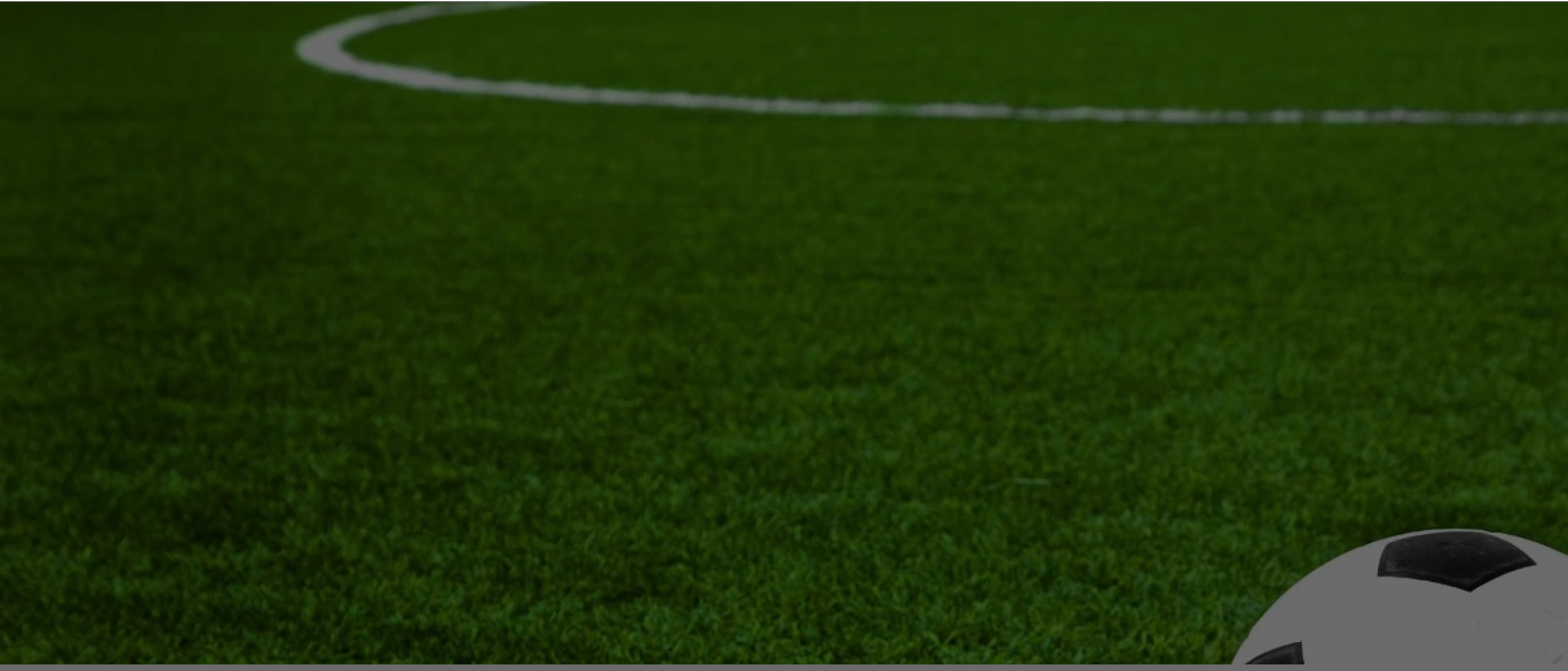

Download Info Pack
Commonly asked Artificial Turf Questions
Why should you go with Easy Turf for your artificial turf?
We are an industry leading supplier and installer of high quality artificial grass in Australia. As industry experts we can give you the best advice for when you are laying your synthetic grass. Installing artificial turf can provide a rewarding experience to your family and household as it frees you from the hassles and expense of owning a traditional lawn.
If you have any questions on artificial grass, we are happy to help answer any of your questions around the installation of your synthetic grass. How to get in contact? Reach us on 1300 475 499 or, at https://www.easyturf.com.au/contact-us.
We have a step by step guide on laying your synthetic grass into simple steps. The guide will run you through:
- Getting ready – your checklist
- Measuring up for synthetic grass
- Choosing the right grass for you
- Preparing the ground for your synthetic grass
- Rolling and pegging out your grass
Expert tips for natural-looking artificial grass
Why you should double check your Artificial Turf measurements
When measuring up for artificial grass installation it’s crucial to know exactly how much artificial turf you are going to need for your project. Just imagine being short a few square metres on your project or you have massively over-ordered your artificial turf. Double check your measurements and also ensure you order slightly more artificial turf than you think in case there is miscalculation or errors.
How do you prepare the ground for synthetic grass?
Preparing the base so that it is rubble-free, smooth and flat is essential to the success of your DIY turf-laying project. Skip a step and you risk unwanted lumps and bumps.
Remove any existing turf and soil including any stones, pebbles and debris. We suggest you dig to around 7.5cm deep.
- To prevent any regrowth from weeds and unwanted plants, place a plastic membrane over the entire cleared area.
- Apply a thin layer of crushed stone over the top of the plastic membrane.
- Use planks of wood to create a new layer over the top of the crushed stone.
- If you are laying your artificial grass over the top of concrete or paving stones, it’s essential to check that it is level. If not, you will need to use a spirit level and create extra height with additional concrete or other materials. You will also need to make sure that there is adequate drainage close by to handle excess rain and water.
- We recommend that you use a foam underlay on the top of the concrete to create a more comfortable feel underfoot. Easy Turf suggests using 5mm of foam underlay on top of concrete and pavers to give some softness.
- Use a compactor where necessary to ensure a level and robust finish to your foundations.
How to roll out and peg your synthetic grass
Once you have the foundations in place, it is time to peg out your turf, a crucial step before you permanently fix it into position. Follow these steps to ensure the best results.
Slowly unroll your synthetic turf over the carefully prepared foundations.
Use your nails and/or pegs and place at even intervals along the turf but about 30-40cm from the edge to hold it in place (the space between the nail and the edge of the grass will be held down by the adhesive tape used in step D).
If you are using artificial grass on concrete, paving stone or hard floor, use industrial-strength synthetic turf glue instead of nails. As before, leave a gap of approximately 30-40cm to the edge of the grass to allow for the use of tape.
Add the next strip of artificial grass and use the same principles, either nailing/pegging or glueing in place and leaving the space to allow for taping.
As you lay the consecutive strips, be careful to ensure that the pile of the grass is running in the same direction (if the fibres are pointing in alternate ways you will have an uneven stripe in your grass). If in doubt, use your hand to feel which way the threads are pointing.
Once you have covered all your area with synthetic turf you are ready for the next step. Use your industrial strength tape to connect adjoining grass strips. Apply tape along the entire length of one piece of grass and then ‘connect’ the section next to it by laying that on top of the remaining tape. Flatten and ensure that it is a tight fit without any gaps or unstuck areas.
What is the purpose of sand on artificial grass?
- The sand helps the ‘roots’ of the synthetic grass to stay upright, regardless of use; this avoids the grass appearing to flatten on high traffic areas.
- As the sand helps the grass to remain upright it does create a variation on the angle that they point which resembles the blades of real grass.
- Sand helps to prevent a flattening of the blades in high traffic areas.
- Using the correct type of sand (only use artificial turf white sand) allows for excellent drainage without washing away the sand or soaking up excess water.
- The sand remains within the turf and doesn’t rub off on clothing or on kids and pets who choose to roll on the grass.
No time for DIY?
We understand that even though you might prefer to install your artificial grass you don’t have the time. We understand if, due to time constraints (or you don’t like DIY), that you’d prefer that the other experts (us) did the job and you get to spend the weekend trying out your new lawn. No worries.
Easy Turf is happy to provide installation and supplier services and take away yet another hassle. As well as supplying samples of our range of artificial grass, we can also provide quotes and have a register of approved installers of our artificial grass in Australia. Select your State and you will see a list of our recommended suppliers and installers.
Contact EasyTurf today and let us help you choose from the best artificial grass in Australia. We pride ourselves on our excellent customer service with honest and reliable advice. Contact us for a quote or more information sales@easyturf.com.au
What supplies do you need to lay Artificial turf?
In order to have a hassle free synthetic lawn installation you need to make sure you’ve done the prep work. Here is a handy checklist to make sure you have all the things you need:
- Grass – Choosing the right grass for your yard is important for your enjoyment. We offer a wide range of synthetic grasses that are designed to look & feel just like real grass.
- Pegs and nails to hold down the grass and prevent movement
- Industrial gloves – to protect your hands
- Peel and stick tape – to join synthetic grass together and provide a neat finish
- Industrial strength synthetic grass glue – ideal if you are putting your lawn on top of concrete, pavers or other hard surfaces
- Artificial grass sand and fine rock – for a reliable base and for finishing off the prep
- Foam underlay – if you are using grass on hard surfaces such as concrete and pavers
- Wooden planks – to help flatten the earth
- Compactor (either manual or machine-driven) – to flatten the ground and ensure a professional finish
- Standard tools such as a broom, rake, hammer, spirit level, hose, retractable tape measure, nails, quality retractable or fixed blade knife
How to choose the right synthetic grass for you?
Once you have the correct measurements for your artificial grass, you need to select which type of synthetic grass will be best for your project. Easy Turf has a wide range of fake grass available that is suitable for residential, educational, sports, and commercial applications. We offer free samples and also partner with local wholesalers.
Can I Lay Fake Grass On Dirt
It’s not advisable to lay fake grass on topsoil or any sort of soil. This will leave you with an uneven finish for your freshly installed artificial grass, and also have weeds slowly grow in over time.
For the best results follow our DIY Guide for installing fake grass.
How To Lay Artificial Grass On Sand
Artificial grass cannot be placed only on sand, as you need to use crushed rock to assist with the drainage and ensure that the synthetic grass stays level.
For the best results follow our DIY Guide for installing fake grass.
Why use silicon sand with your artificial grass?
Once you’ve laid your artificial grass you have two options in your next steps. You can either leave the grass as is or add sand to make it appear more natural.
Adding sand to the grass can help it appear more natural as it helps keep the grass upright. To add the proper amount of sand ee recommend that you allow for approximately 10-15kg per sqm for coverage. Using a rake or a broom, sprinkle the sand on top of the grass and walk it in to make sure that it falls deep down into the pile and settles at the base. Then, water the lawn to help the sand settle down within the grass.

